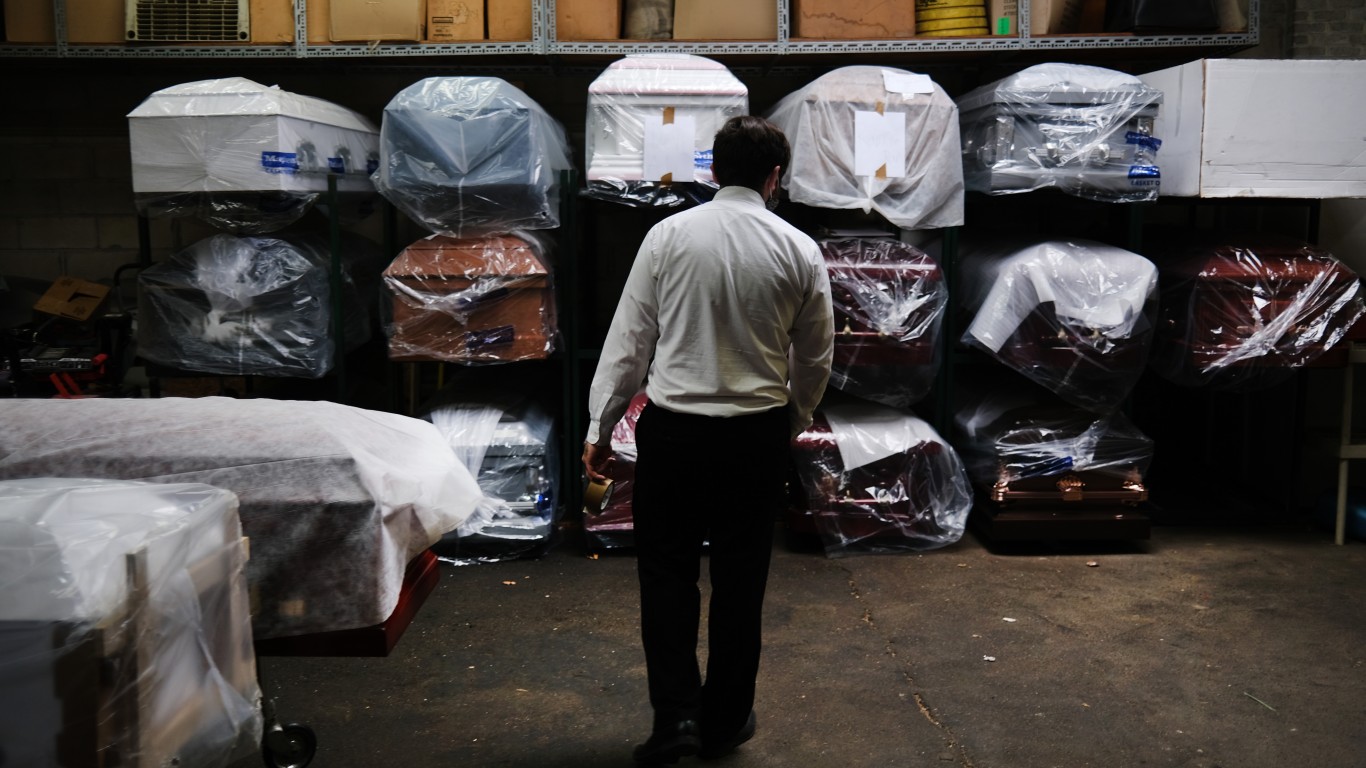

Jan. 21, 2021, marks exactly one year since the novel coronavirus — that first appeared in China at the end of December 2020 — was confirmed in the U.S. Though health officials warned that the risk to Americans was low, the virus spread across all 50 states in less than two months.
What followed was an extraordinary year of living in the shadow of a pandemic, significant economic struggles, and death. The year also marked a remarkable achievement — the development and release of two COVID-19 vaccines in the country.
As the U.S. enters the second year of the coronavirus pandemic, 24/7 Tempo reviewed news archives to create a timeline of key milestones in the pandemic’s progress since the coronavirus was first reported in the country.
Going from “low-risk” to having a never-before-seen coronavirus infiltrate just about every aspect of everyday life led to government-imposed public health measures and travel restrictions aimed at slowing some of the spread.
COVID-19 is the disease caused by the novel coronavirus, which is thought to have surfaced in a Chinese seafood and poultry market COVID-19 has killed more than 400,000 people in the U.S. and infected nearly 24.5 million.
Though scientists have been studying the novel coronavirus for over a year, and though two vaccines against COVID-19 have been rolled out, there are still no fully effective treatments and many unknowns — here are 20 major myths about COVID-19.
Click here to see a year of coronavirus spread in US from January 2020 until January 2021.
To create a timeline of 50 key milestones in the spread of the coronavirus pandemic in the United States, 24/7 Tempo reviewed press releases and announcements issued by the Centers for Disease Control and Prevention, the Food and Drug Administration, health experts, and government officials. We also reviewed scientific studies’ summary published in medical journals, including the New England Journal of Medicine.

Jan 21: First coronavirus confirmed case in US
A man in his 30s who has just returned to Washington state from a trip to the region of Wuhan tests positive for the new coronavirus. He arrived in the U.S. two days before passenger screening was initiated.
[in-text-ad]
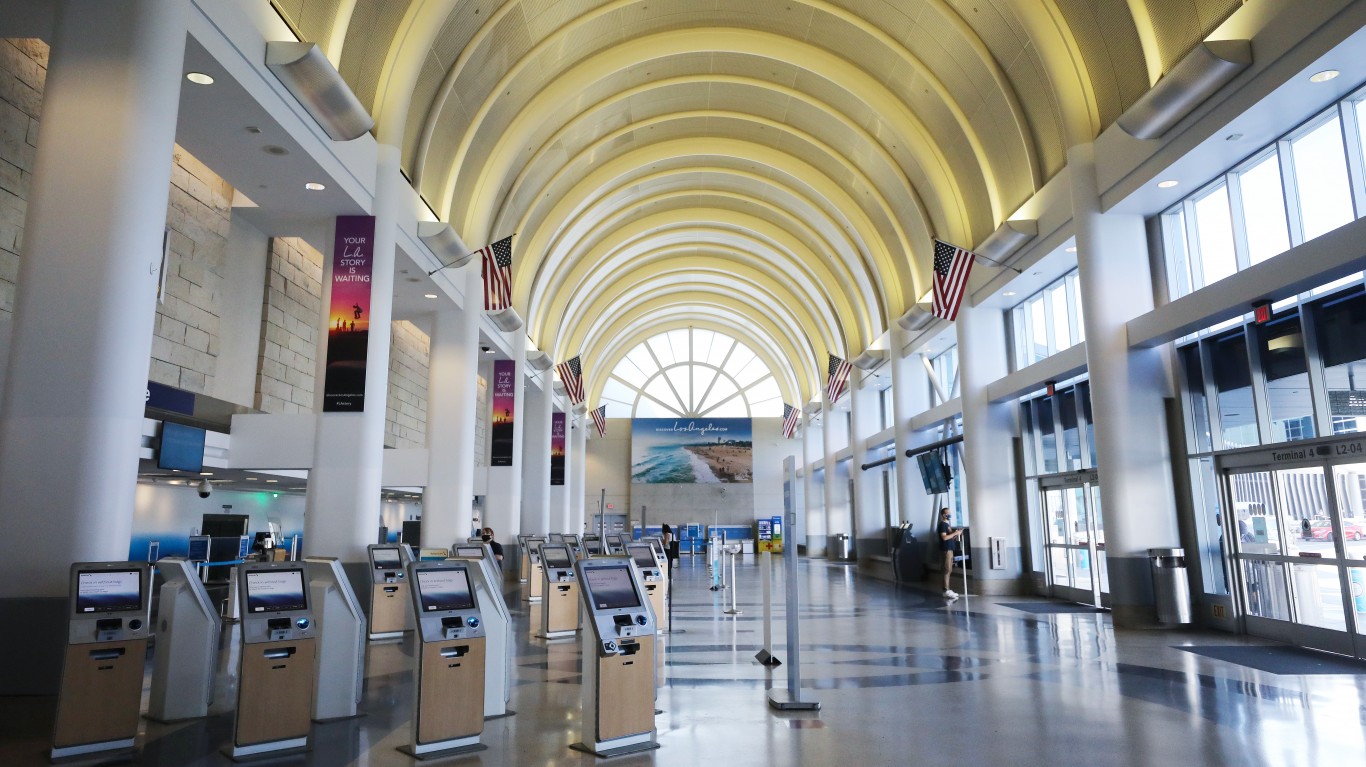
Jan 28: US extends screening to 20 airports
The U.S. extends coronavirus screening from five to 20 airports that handle almost all incoming passengers from China.
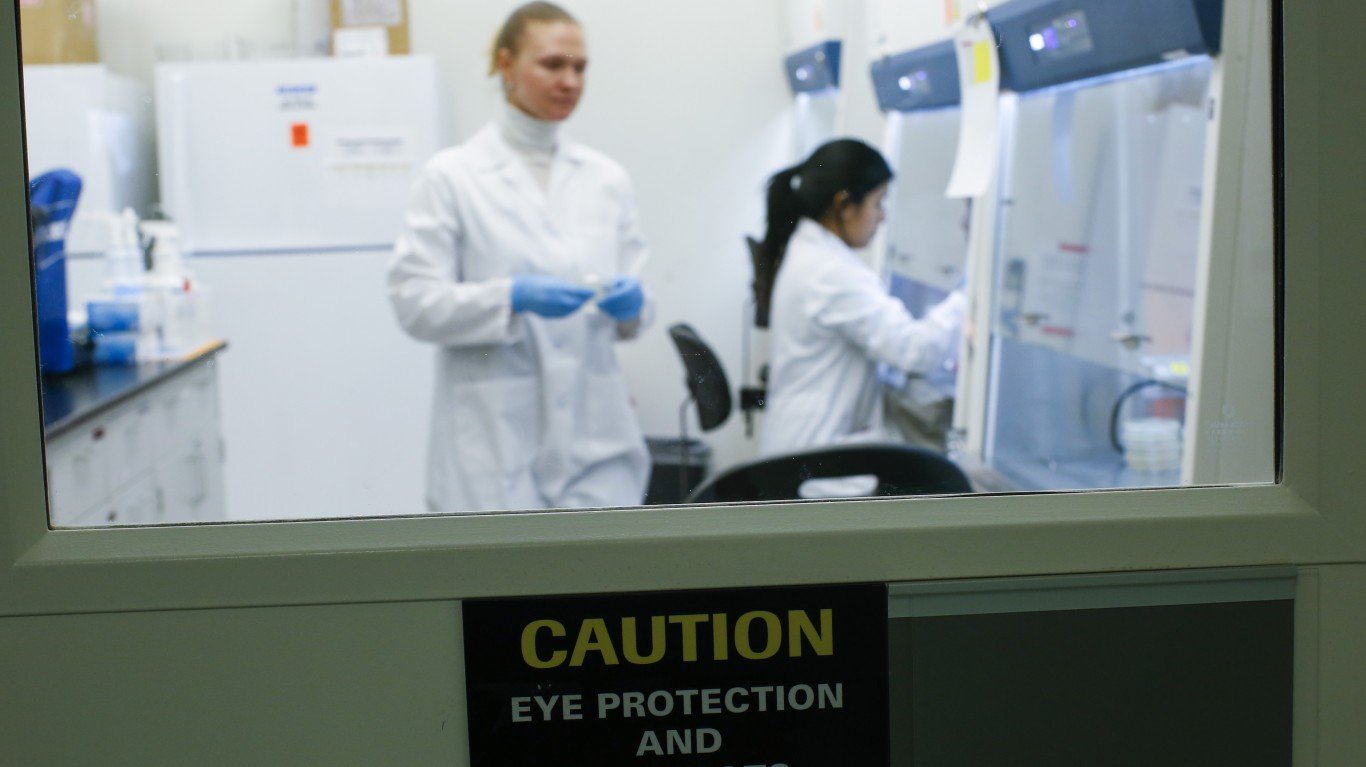
Feb 4: FDA authorizes CDC’s diagnostic test
The U.S Food and Drug Administration issues an emergency use authorization for the Centers for Disease Control and Prevention’s PCR (polymerase chain reaction) diagnostic test that detects coronavirus infection. So far, the test has been used only at CDC laboratories. The authorization allows any CDC-qualified lab across the country to use the test to identify new coronavirus cases.

Feb 25: San Francisco becomes the first US city to declare a state of emergency
San Francisco Mayor London Breed declares a state of emergency, even though no coronavirus cases have been confirmed in the city. He says this is a precaution as the order will expedite access to resources and personnel necessary to respond to a potential coronavirus outbreak in the city.
[in-text-ad-2]
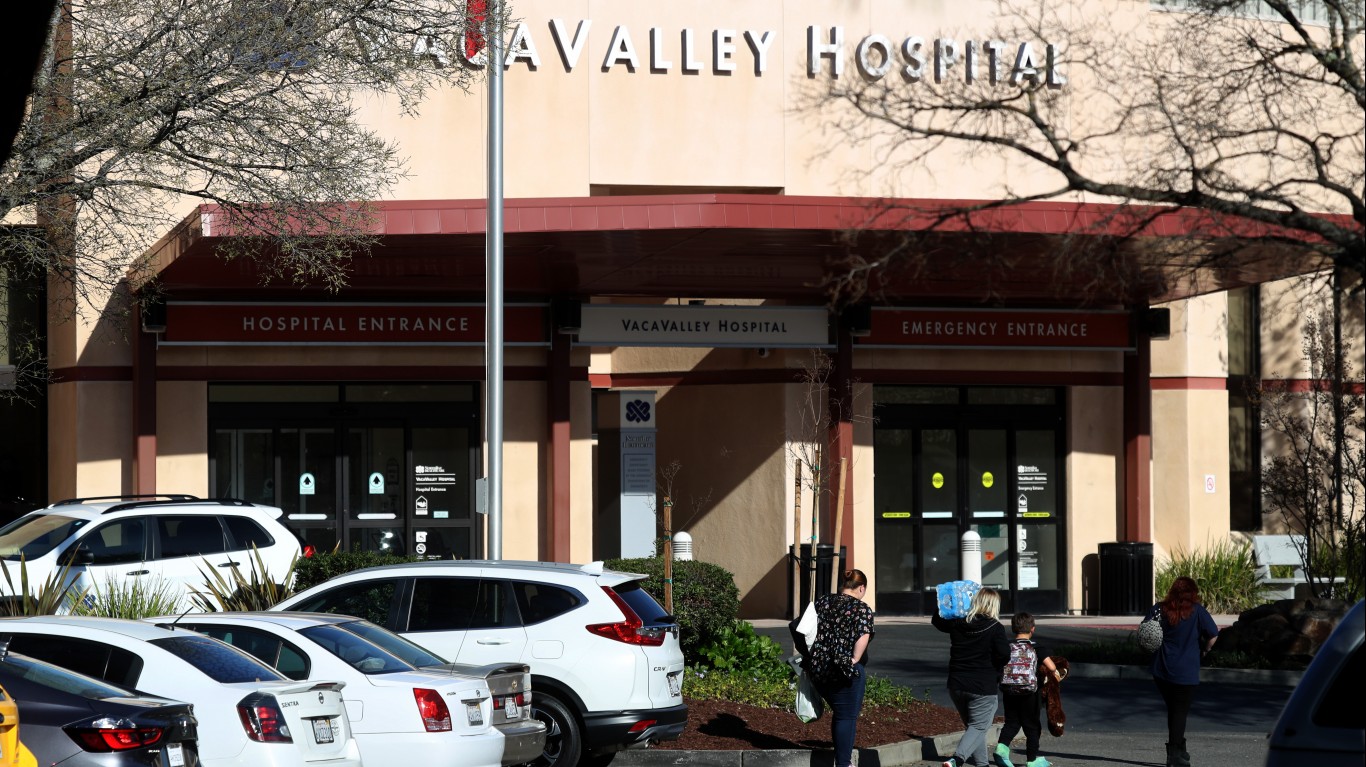
Feb 26: First suspected case of local transmission in US
The CDC announced that a patient in California who has contracted the novel coronavirus has no travel history or exposure to another infected person. The patient from California is the first known case of community spread in the U.S.
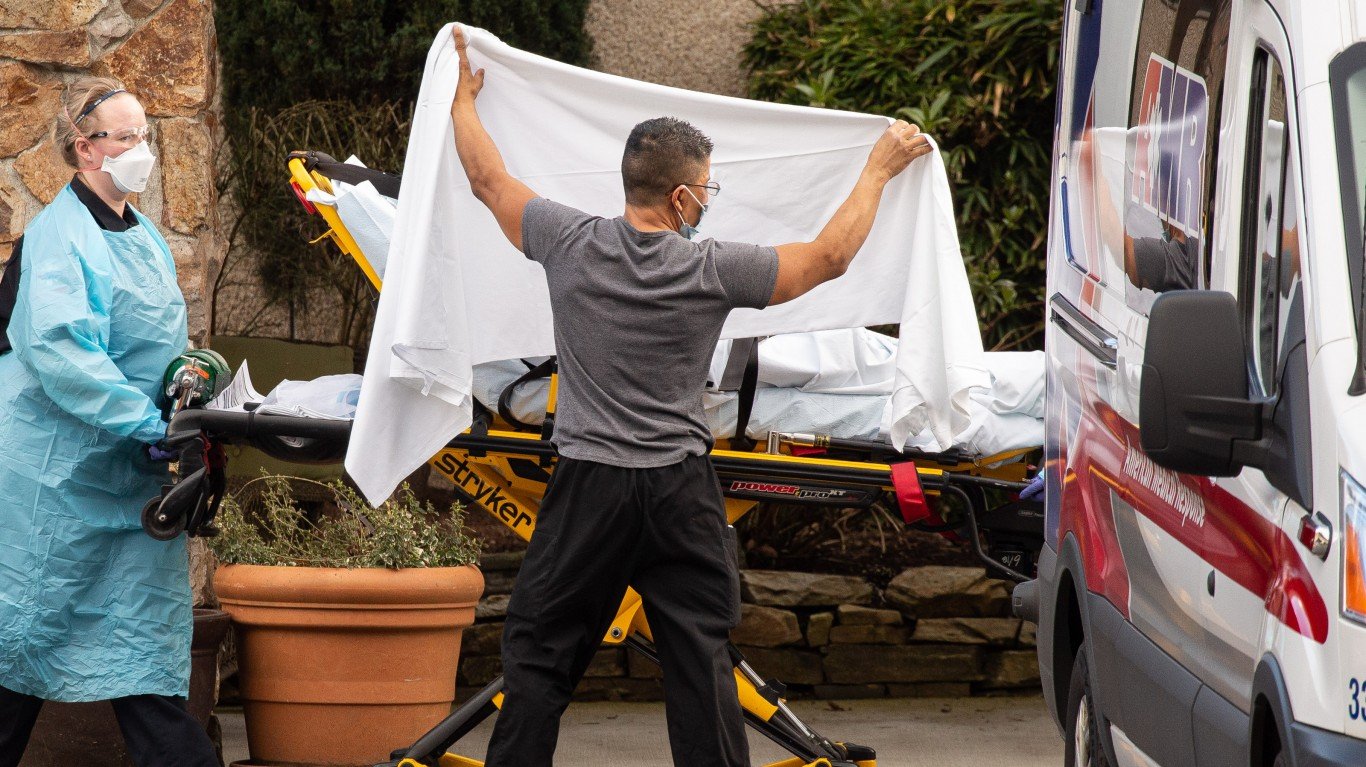
Feb 29: First death reported in US
A man in his 50s with preexisting conditions from Washington state is the first person in the U.S. to die from COVID-19. There is no evidence at the time that he was in close contact with an infected person.
Washington declares a state of emergency.
[in-text-ad]
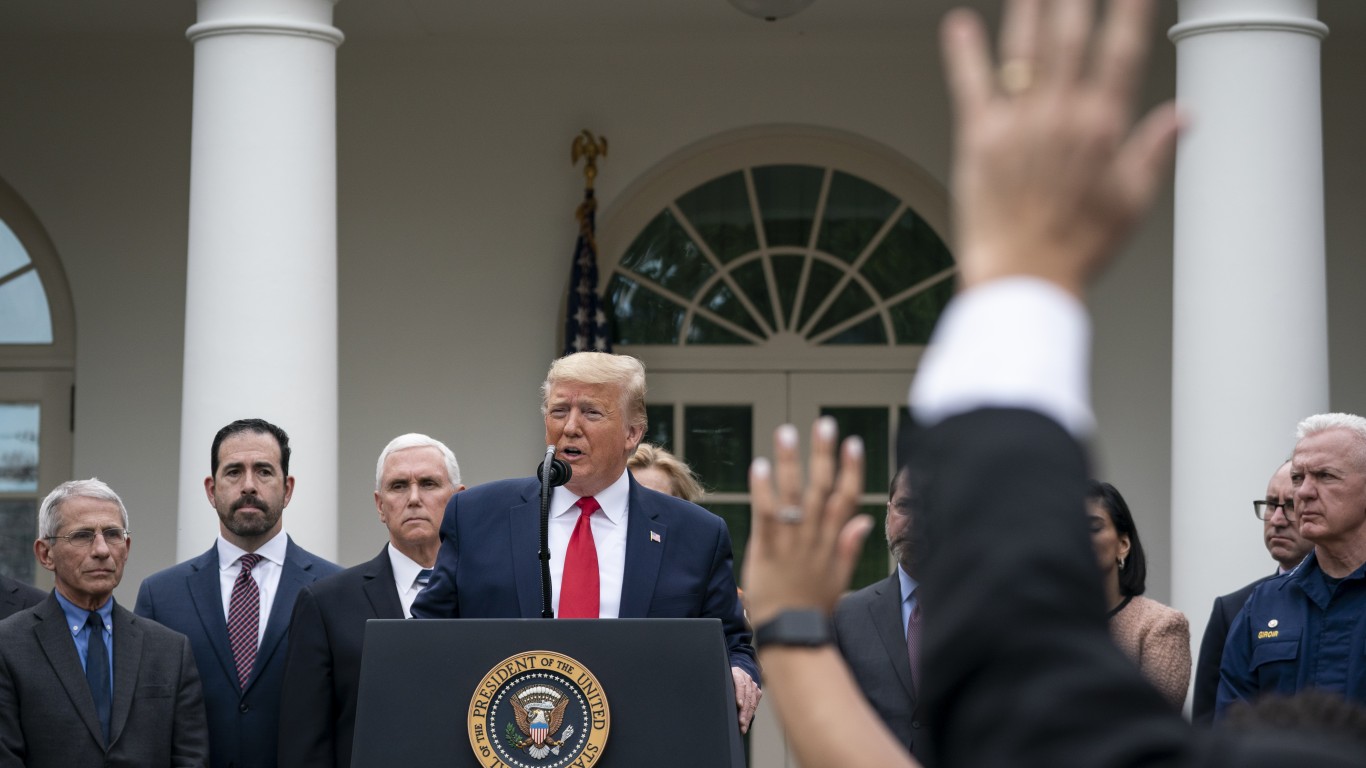
Mar 13: Trump declares national emergency
President Donald Trump declares a national emergency to “unleash the full power of the federal government” in dealing with the coronavirus pandemic as cases across the U.S. increase.

Mar 17: Coronavirus now present in all 50 states
West Virginia is the last state to report a case of the novel coronavirus.

Mar 19: California first state to issue stay-at-home order
Puerto Rico was the first U.S. territory to issue a mandatory stay-at-home order on March 15. California followed suit four days later, becoming the first state to issue such an order, according to the CDC.
[in-text-ad-2]
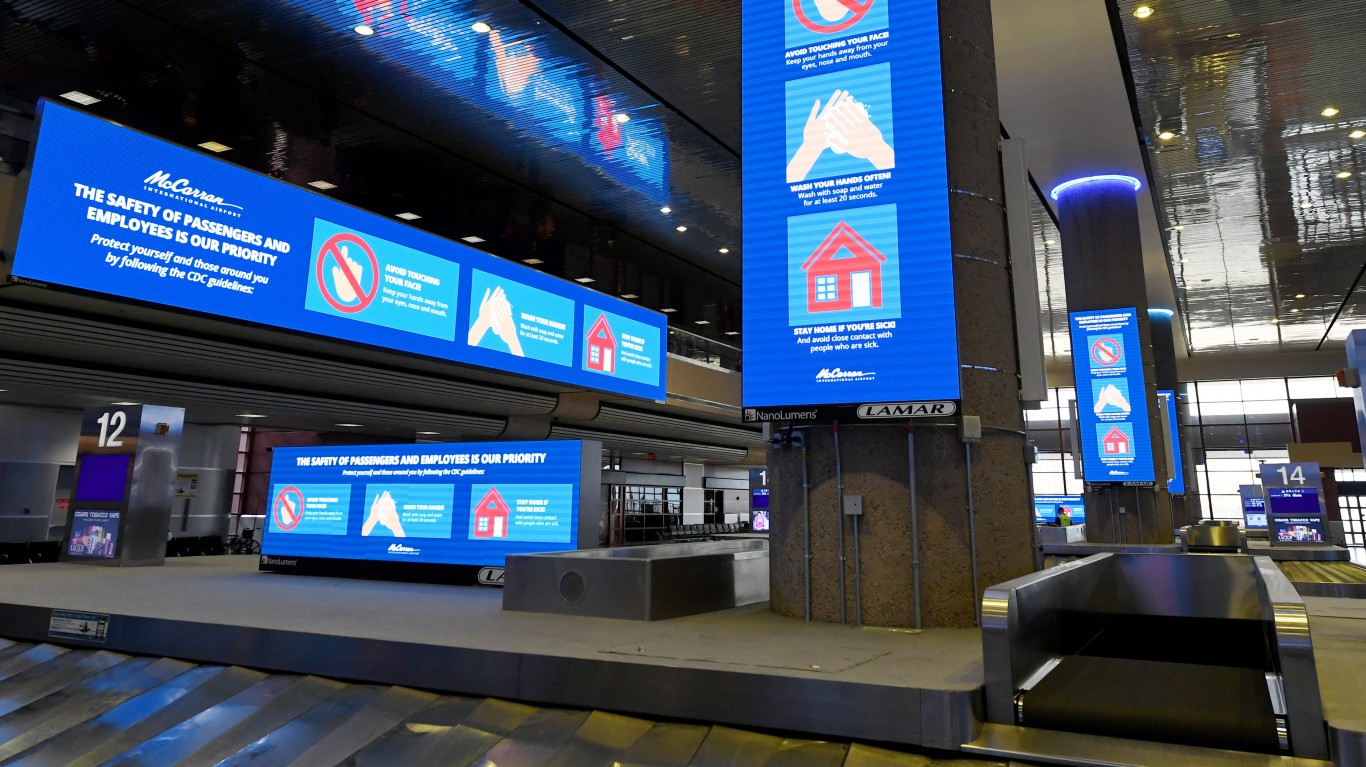
Mar 19: State Department issues a blanket Level 4 ‘Do Not Travel’ advisory
The U.S. Department of State issues the highest level advisory against all international travel. Americans are warned against traveling anywhere abroad due to the fast spread of the novel coronavirus.
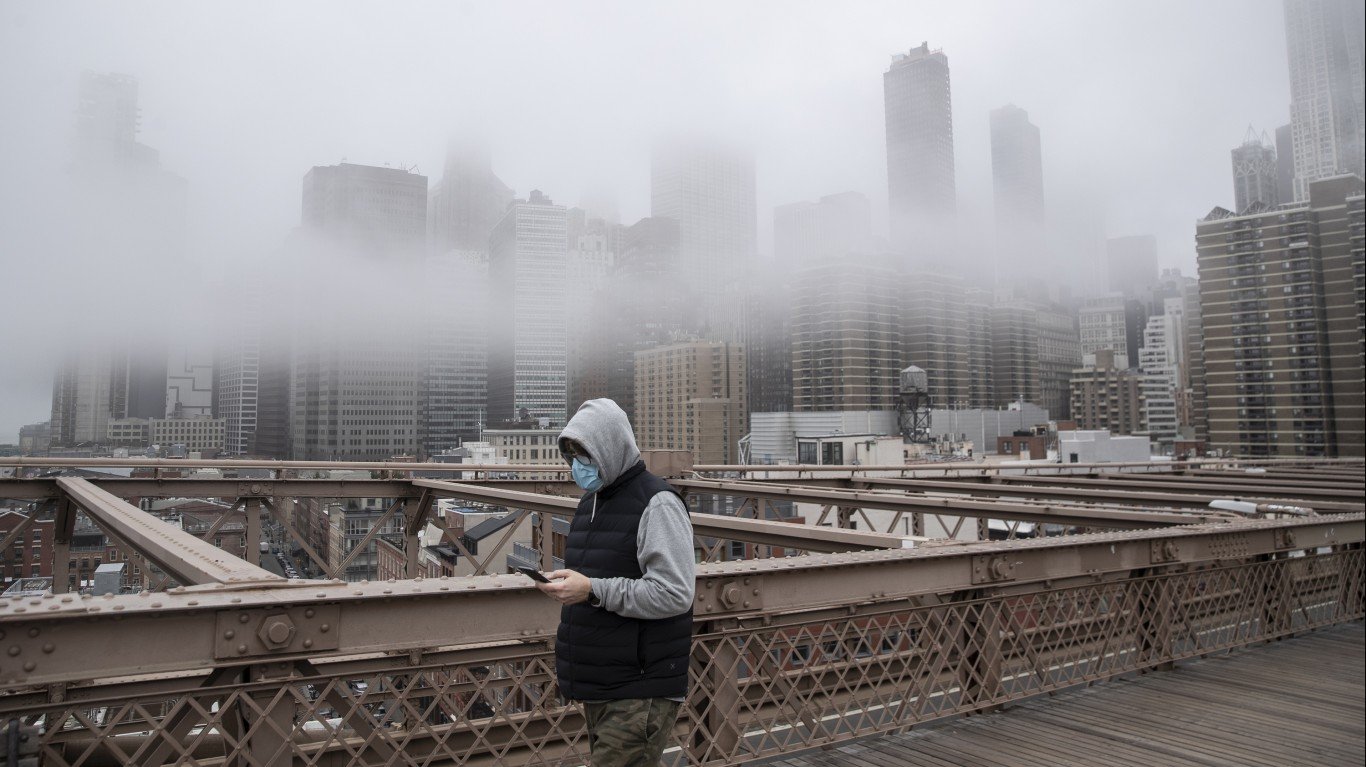
Mar 20: New York City becomes US outbreak hotspot
With cases of confirmed coronavirus cases Increasing from 183 to 5,151 in six days, New York City becomes the hardest hit by the pandemic in the U.S. There are a total of 8,377 reported cases in the entire state.
[in-text-ad]
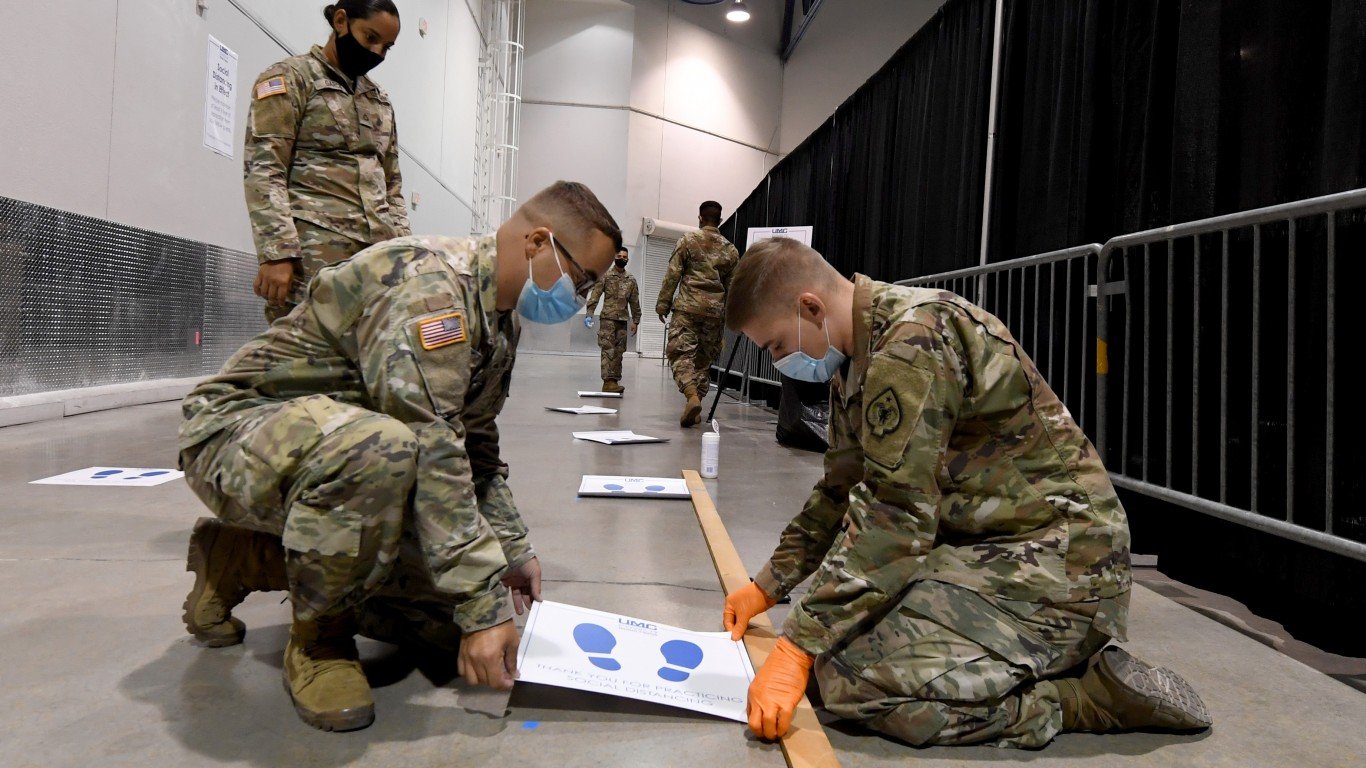
Mar 24: US National Guard activated in all 50 states
The U.S. military expands its coronavirus response effort. The National Guard is now active across the country. They are to assist state response efforts to mitigate and control the coronavirus pandemic.
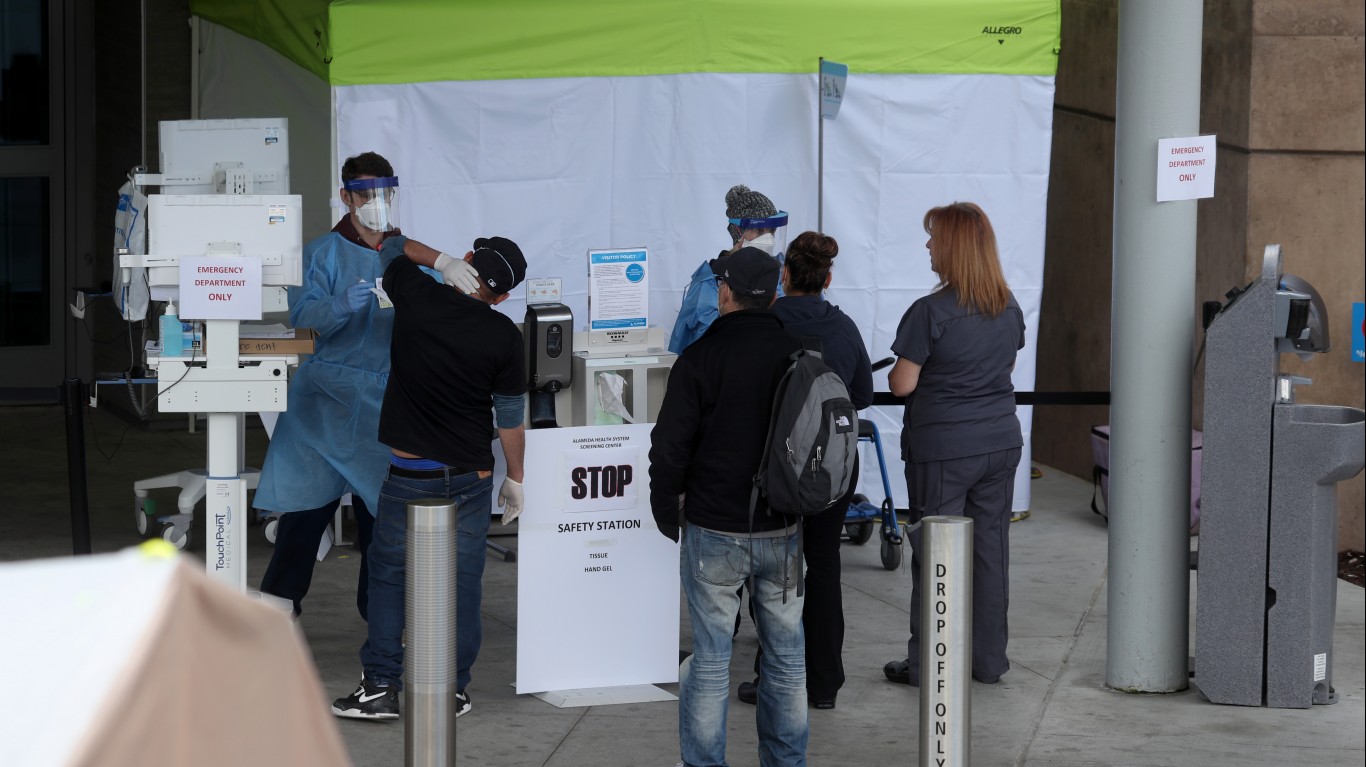
Mar 26: US leads world in COVID-19 cases
The U.S. confirms at least 81,321 COVID-19 cases by March 26 — more cases than China, Italy, or any other country. More than 1,000 people have died from COVID-19-related causes by that date.
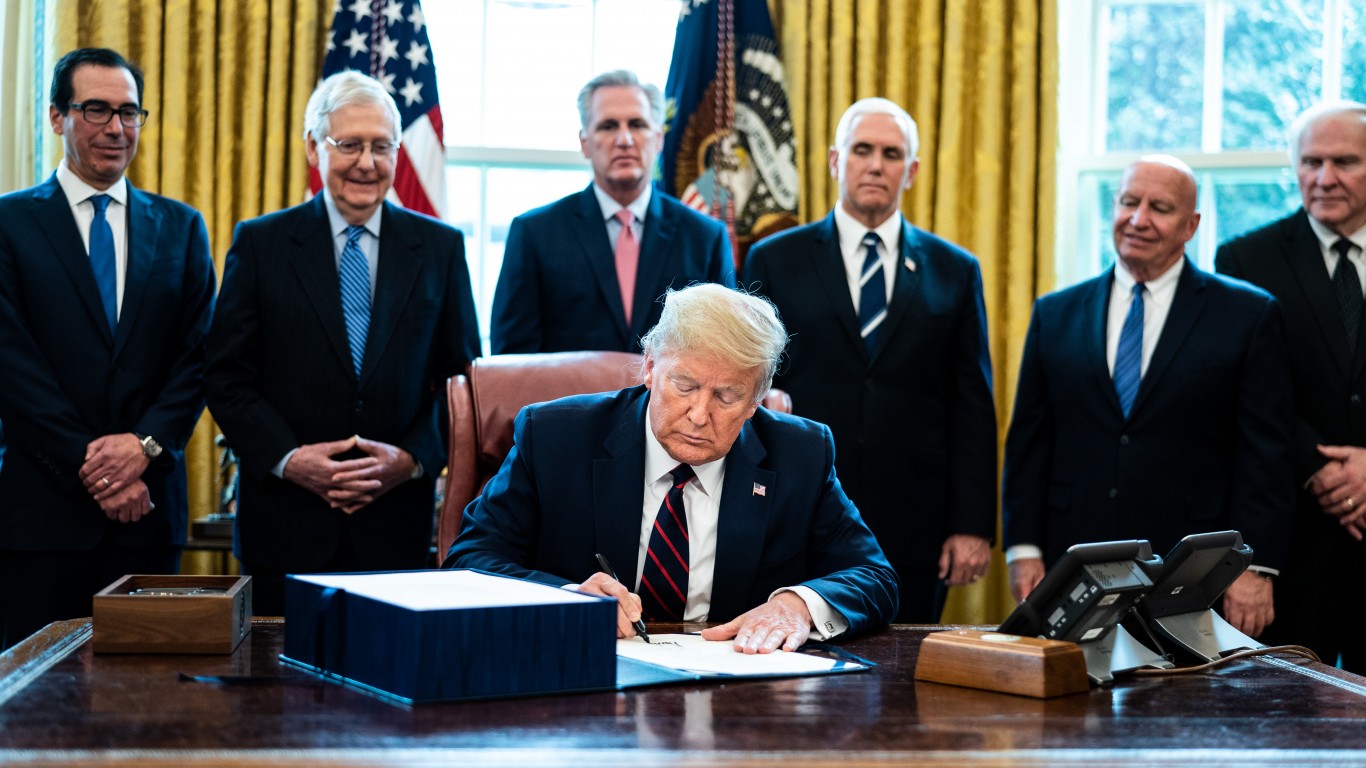
Mar 27: Trump signs $2 trillion stimulus bill
The president signs the largest stimulus package in U.S. history — a $2 trillion bill intended to rescue the coronavirus-battered economy. The package includes massive injection of loans, tax breaks, and direct payments to small and big businesses as well as individuals.
[in-text-ad-2]

Mar 31: Model suggests US coronavirus death toll to reach 100,000
Scientists say that the coronavirus pandemic is estimated to kill between 100,000 and 240,000 people in the U.S., warning the death toll can be much higher if people don’t follow guidelines for public health measures like social distancing.
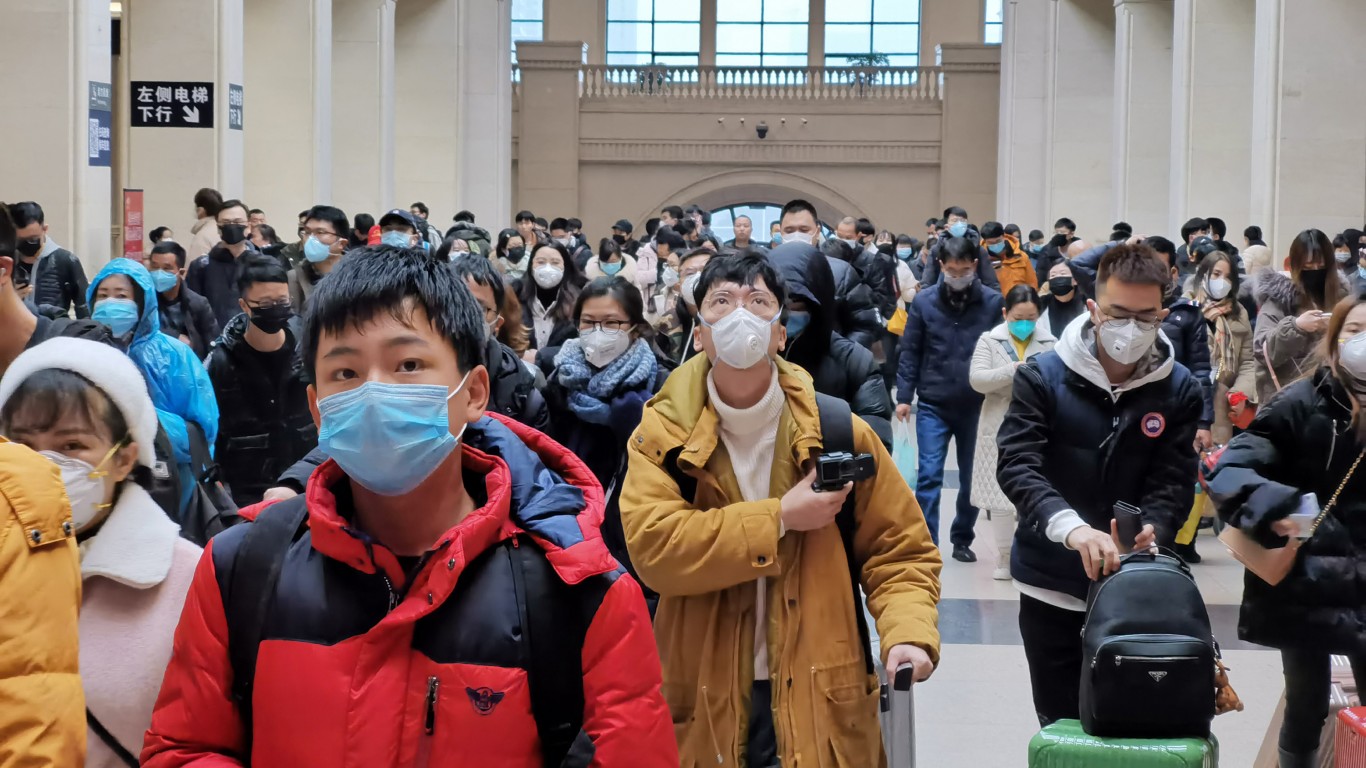
Apr 1: CDC reports transmission can occur before symptom onset
The Centers for Disease Control and Prevention reports on evidence of COVID-19 transmission from pre-symptomatic people. This would make containment much more difficult. About 12.6% of transmissions in Hubei Province, China, may have occurred before the infected person began showing symptoms. It can take up to 14 days for an infected person to show symptoms — if at all.
[in-text-ad]

Apr 2: Over 10 million Americans file for jobless claims
A record 6.6 million people filed new unemployment claims in the week ending on March 28, more than double the number of claims filed the previous week. Overall, more than 10 million Americans applied for unemployment benefits in March.

Apr 2: 90% of Americans under stay-at-home orders
About nine in 10 Americans were ordered to stop going to bars and restaurants or anywhere outside if it is not for essential purposes. Americans are also told to stay away from friends and family and people in general, as per stay-at-home orders that have been issued in nearly all 50 states.
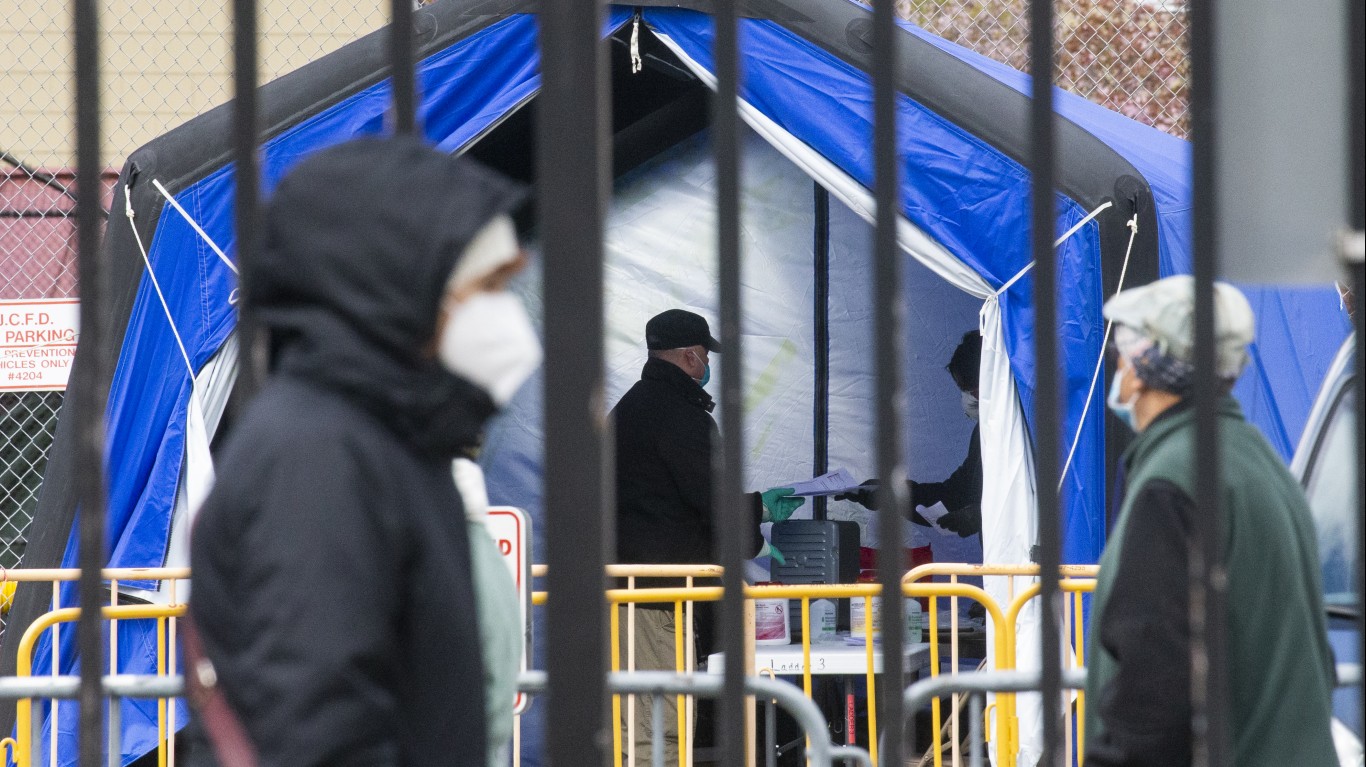
Apr 8: NJ first state to issue a face covering mandate
Gov. Phil Murphy signs an executive order, which also requires people to wear cloth face coverings unless they are under 2 years old or have a medical condition that can make breathing with a mask difficult.
[in-text-ad-2]

Apr 10: New York reports more coronavirus cases than any country
New York state cumulative caseload is higher than any single country outside the U.S., at nearly 160,000. (U.S.’s cumulative caseload is 462,000 cases). Spain has reported 153,000 cases by April 10, and Italy 143,000. China, where the novel coronavirus was first detected, has reported 82,000 cases by that date.
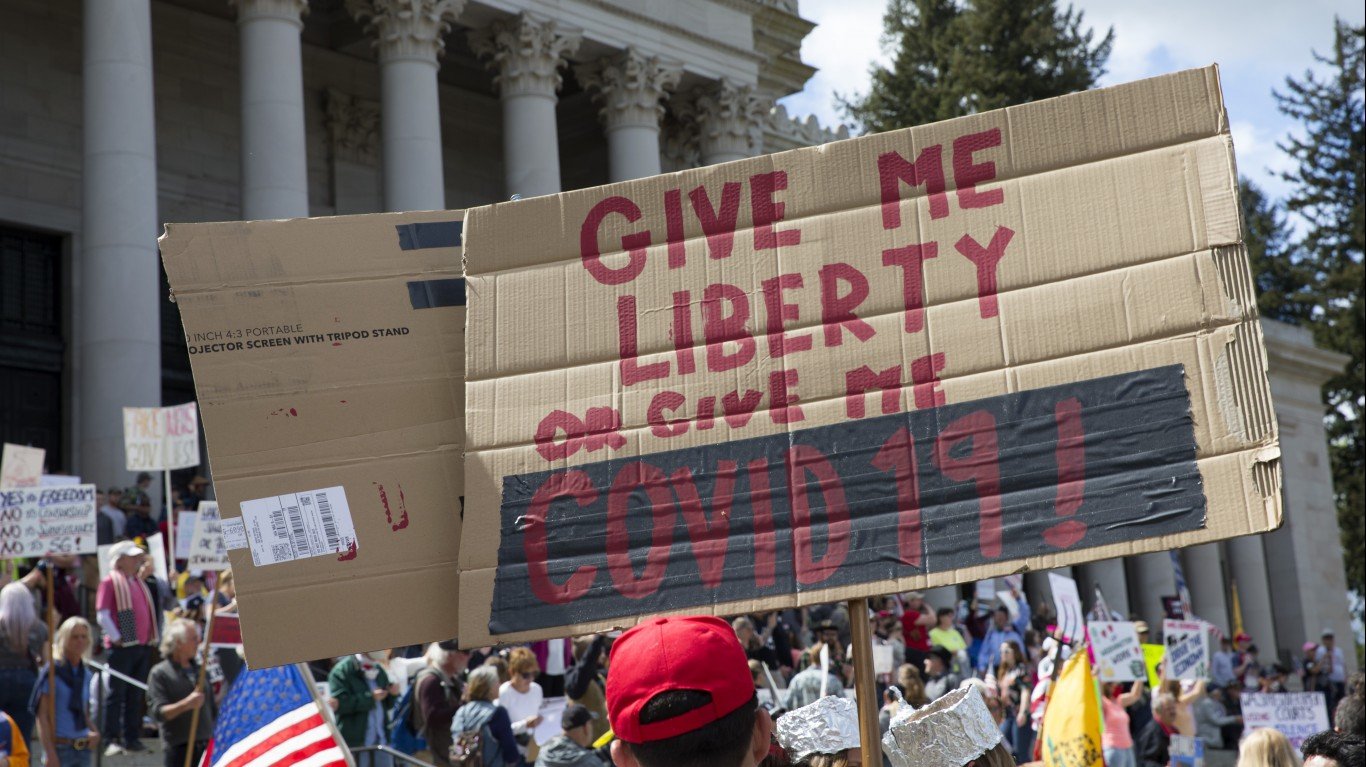
Apr 18: Anti-lockdown protests organized across the US
Groups of people across the country, mostly conservatives, protest government-imposed restrictions on movement and businesses aimed to curb the spread of the virus. Participants cite “an overreaction of fear and an overreach of government power” as the reason.
[in-text-ad]
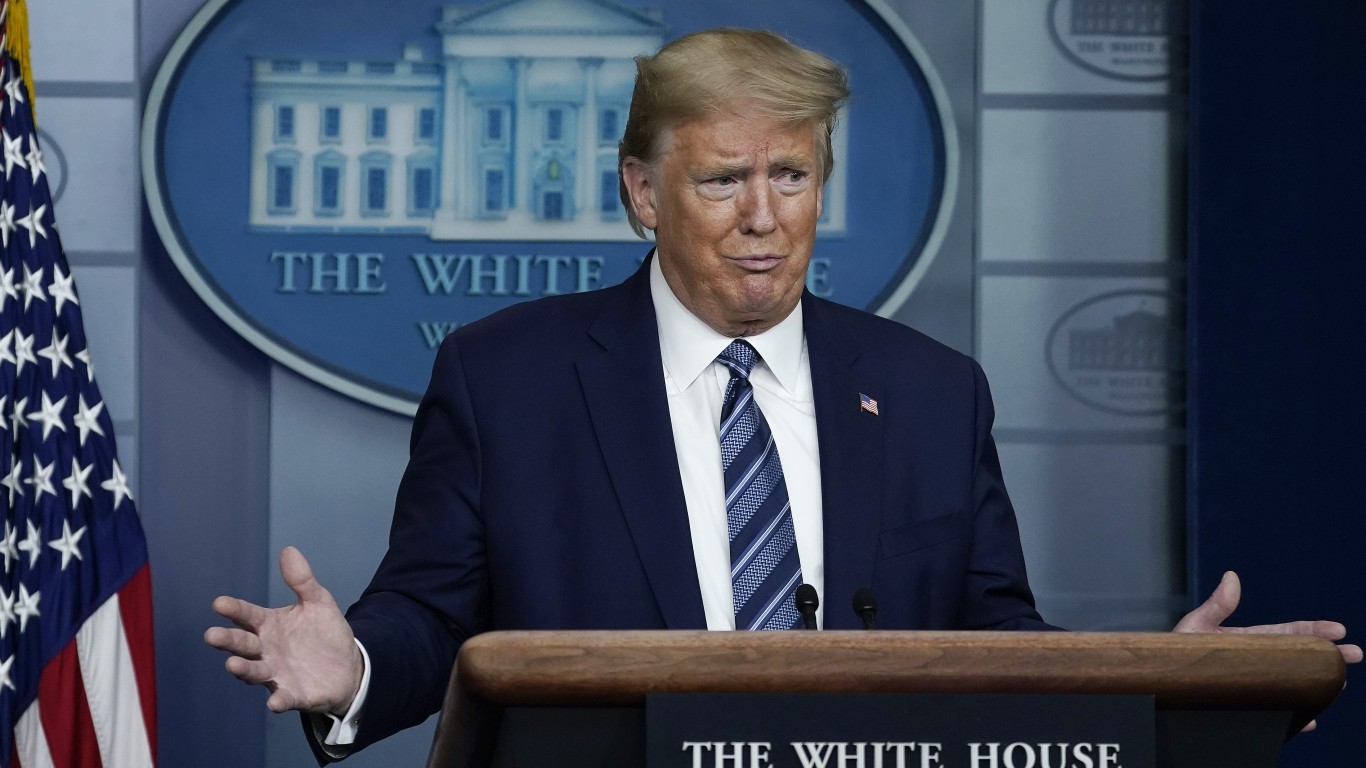
Apr 22: Trump temporarily suspends immigration to the US
Trump signs an executive order suspending immigration to the U.S. for 60 days. People who already have green cards or health care professionals seeking an immigrant visa to help fight COVID-19 in the U.S. are exempt.
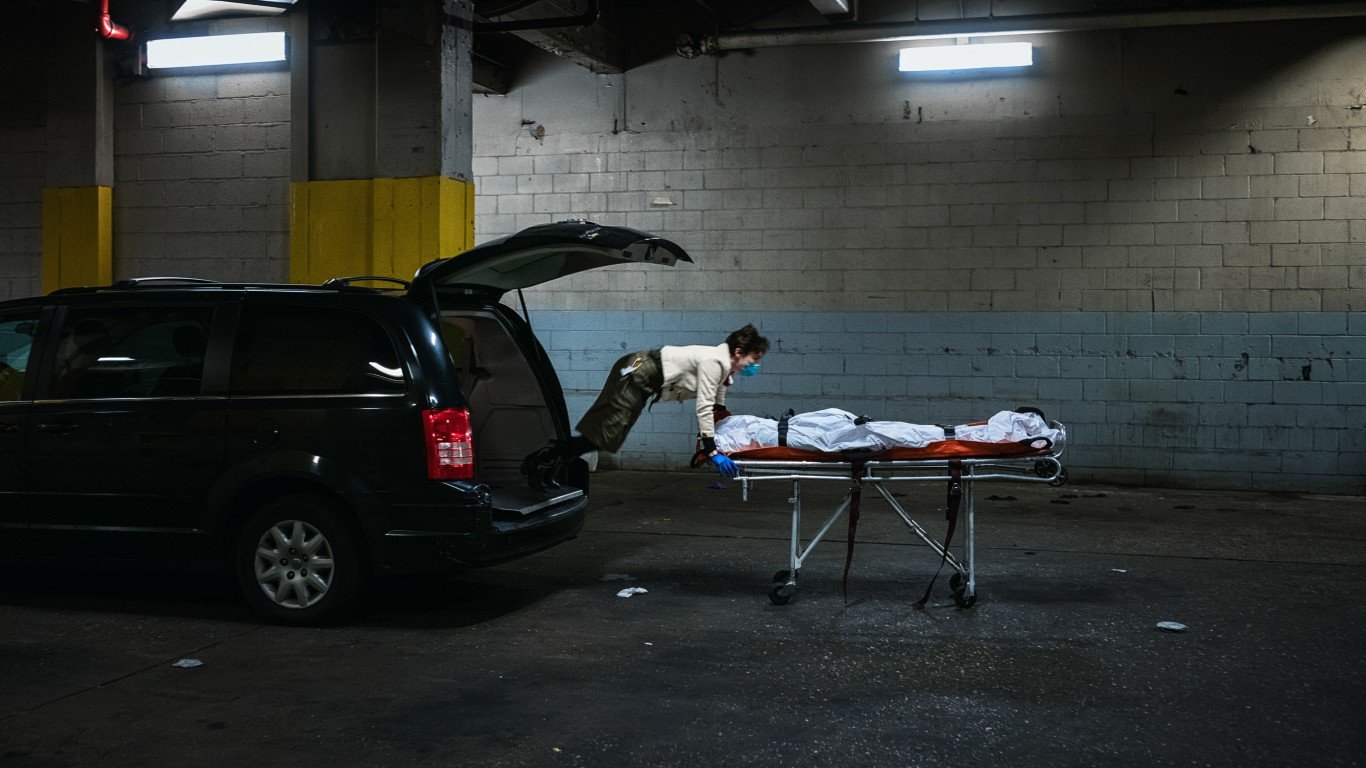
May 27: US reaches 100,000 COVID-19 deaths
The U.S. reaches another bleak coronavirus milestone — 100,000 people have died from COVID-19 in the fourth month since the novel coronavirus was first confirmed in the country.
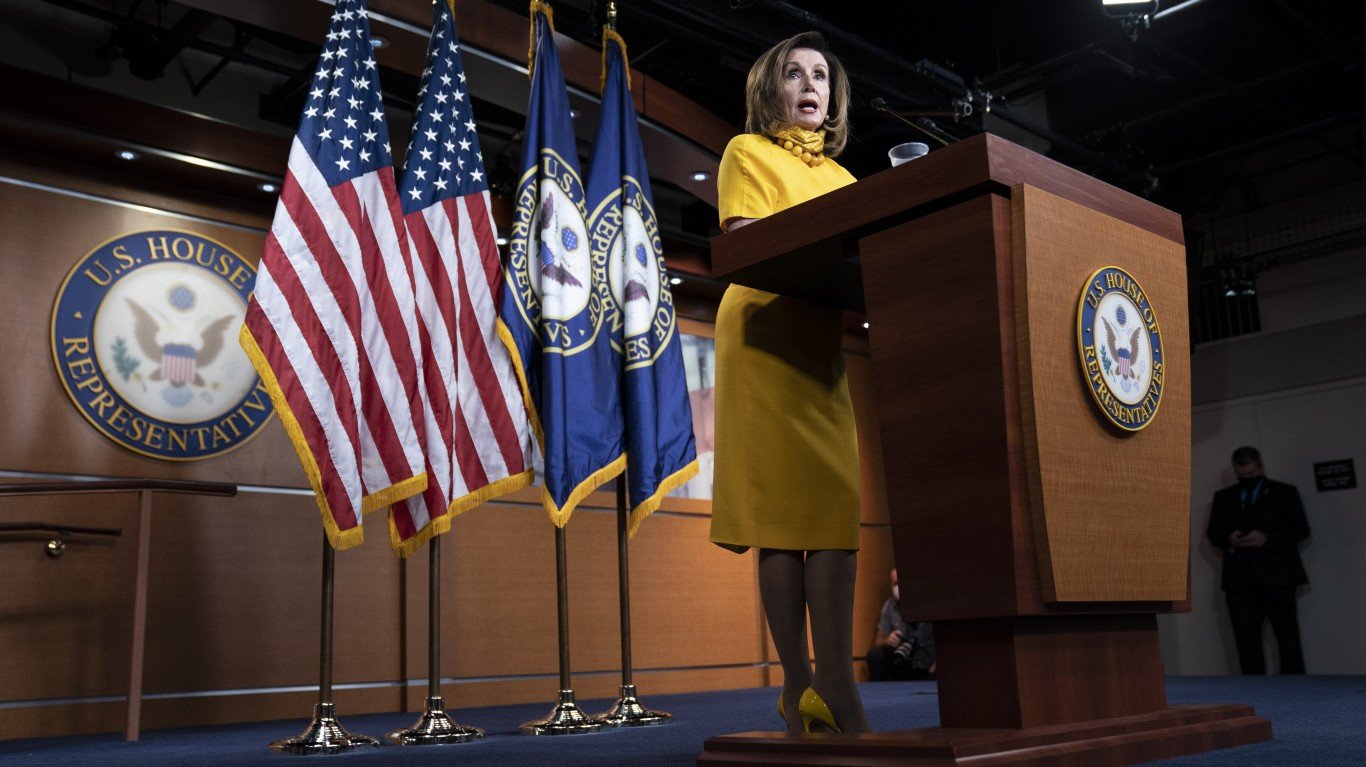
Jun 11: Model projects spike in coronavirus death toll in September and later
A new model, cited by the White House, projects that coronavirus deaths are expected to decline before they sharply rise in September, reaching up to 290,000 fatalities by Oct. 1.
[in-text-ad-2]
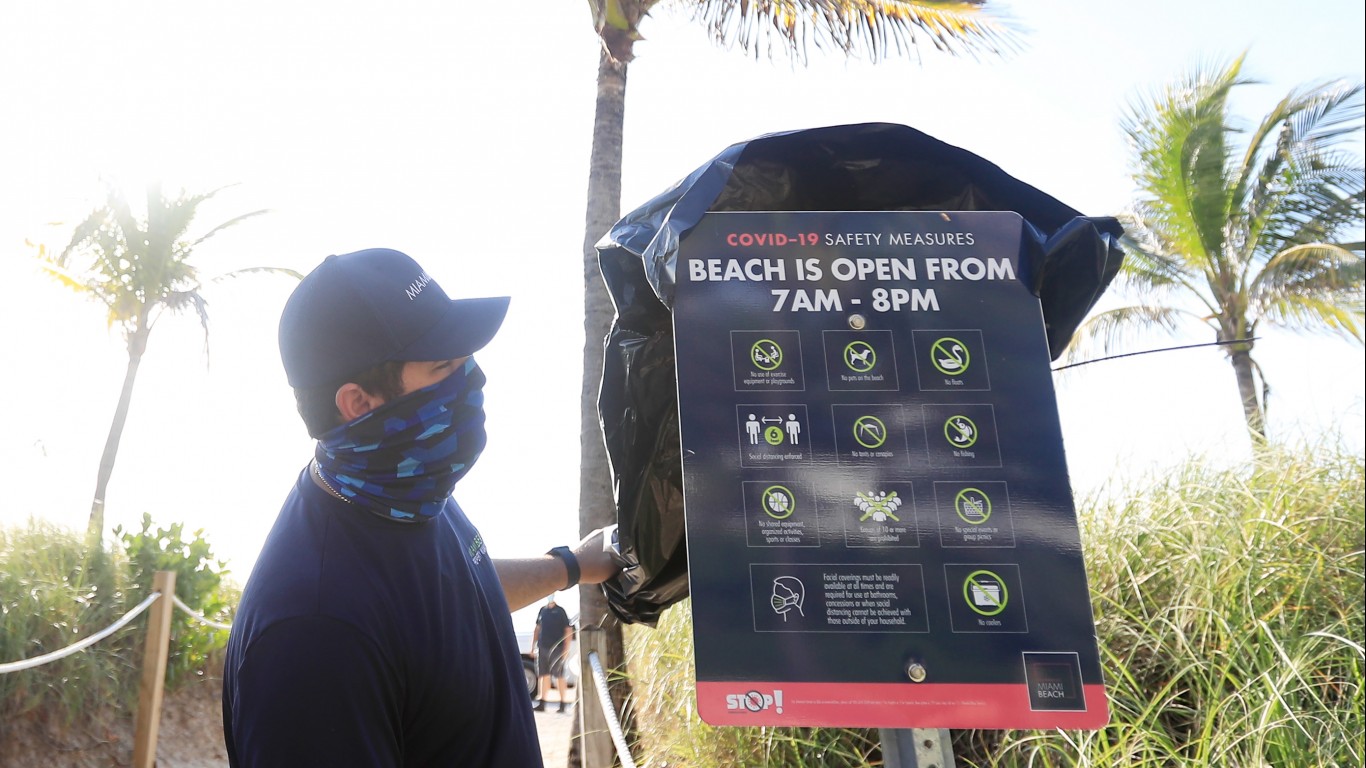
Jun 24: 26 states report a rise in coronavirus cases since easing lockdowns
At least 26 states, mostly in the South and West, report a rise in the average daily coronavirus cases compared to two weeks prior, when states began easing lockdown restrictions.
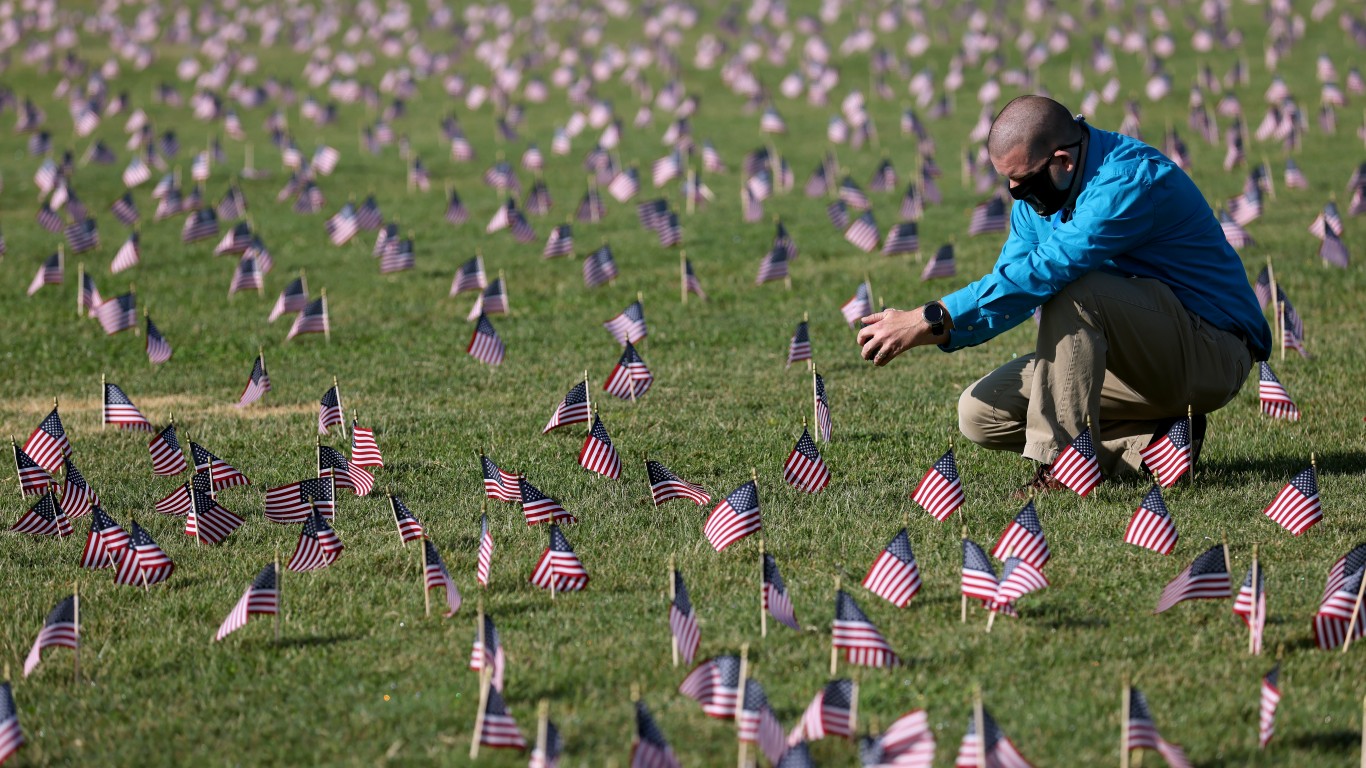
Jul 2: US reports over 55,000 new coronavirus cases, a global daily record
The U.S. reaches a global record for new daily coronavirus cases, reporting more than 55,000 new COVID-19 cases on July 2 in a day. The U.S. reports 55,274 confirmed cases on July 2, exceeding the previous single-day record of 54,771, set by Brazil on June 19.
[in-text-ad]
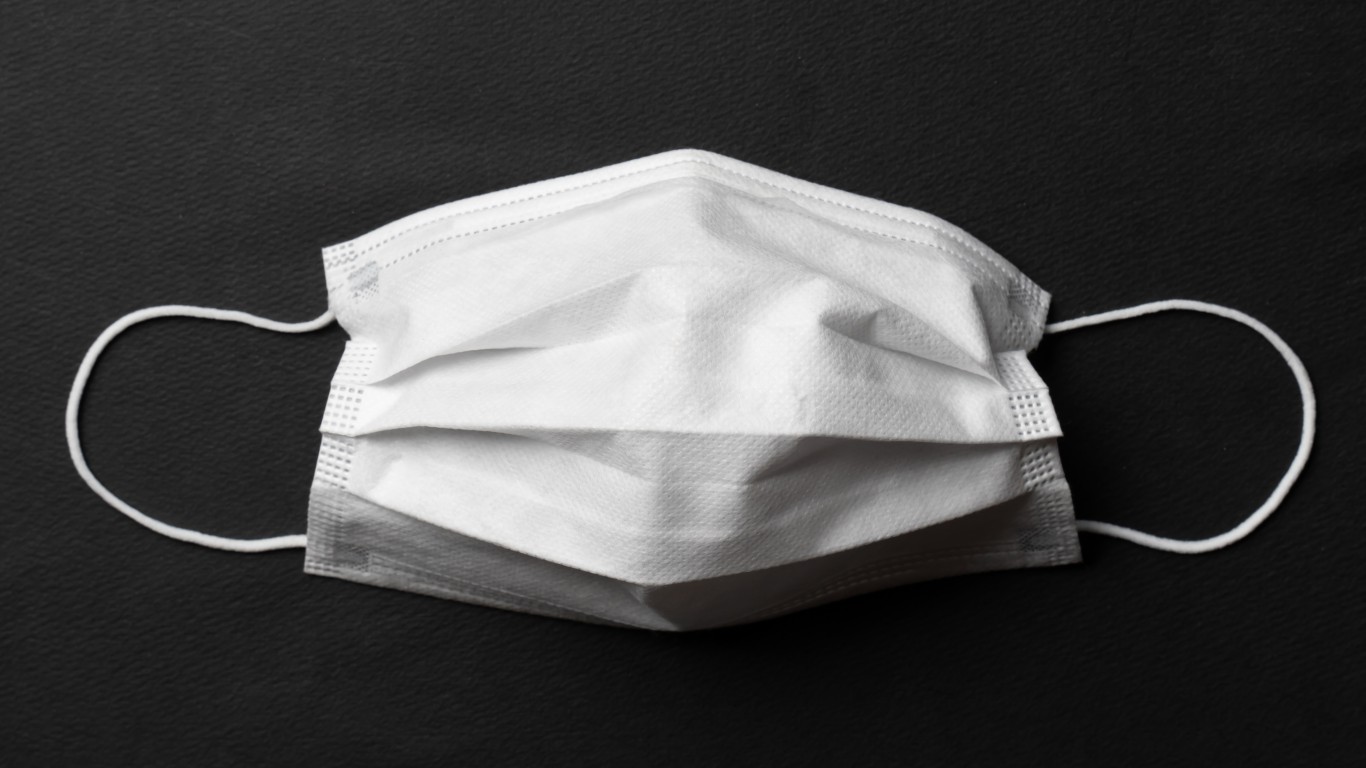
Jul 11: Trump wears a mask in public for the first time
Trump wears a mask during a visit to a military hospital, marking the first time the president is seen wearing a face covering in public. Previously, Trump has declined to wear a mask at news conferences, rallies, and other public events.

Jul 12: Florida breaks single-day record for new COVID-19 cases
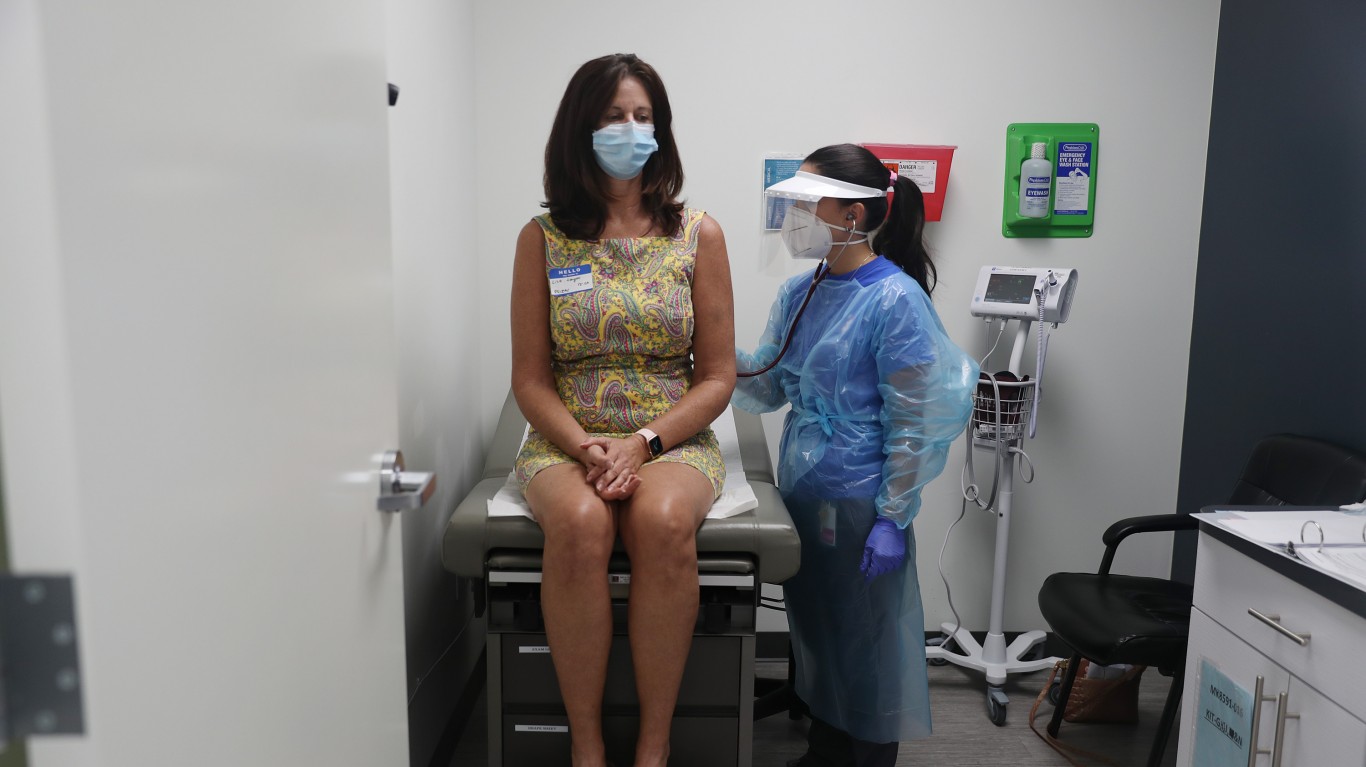
Jul 27: Moderna begins Phase 3 COVID-19 vaccine trials in the US
The first Phase 3 clinical trial of a coronavirus vaccine developed by biotechnology company Moderna and the National Institute of Allergy and Infectious Diseases begins in the United States. The trial is to be conducted at nearly 100 research sites and aims to enroll approximately 30,000 adults who do not have COVID-19.
[in-text-ad-2]
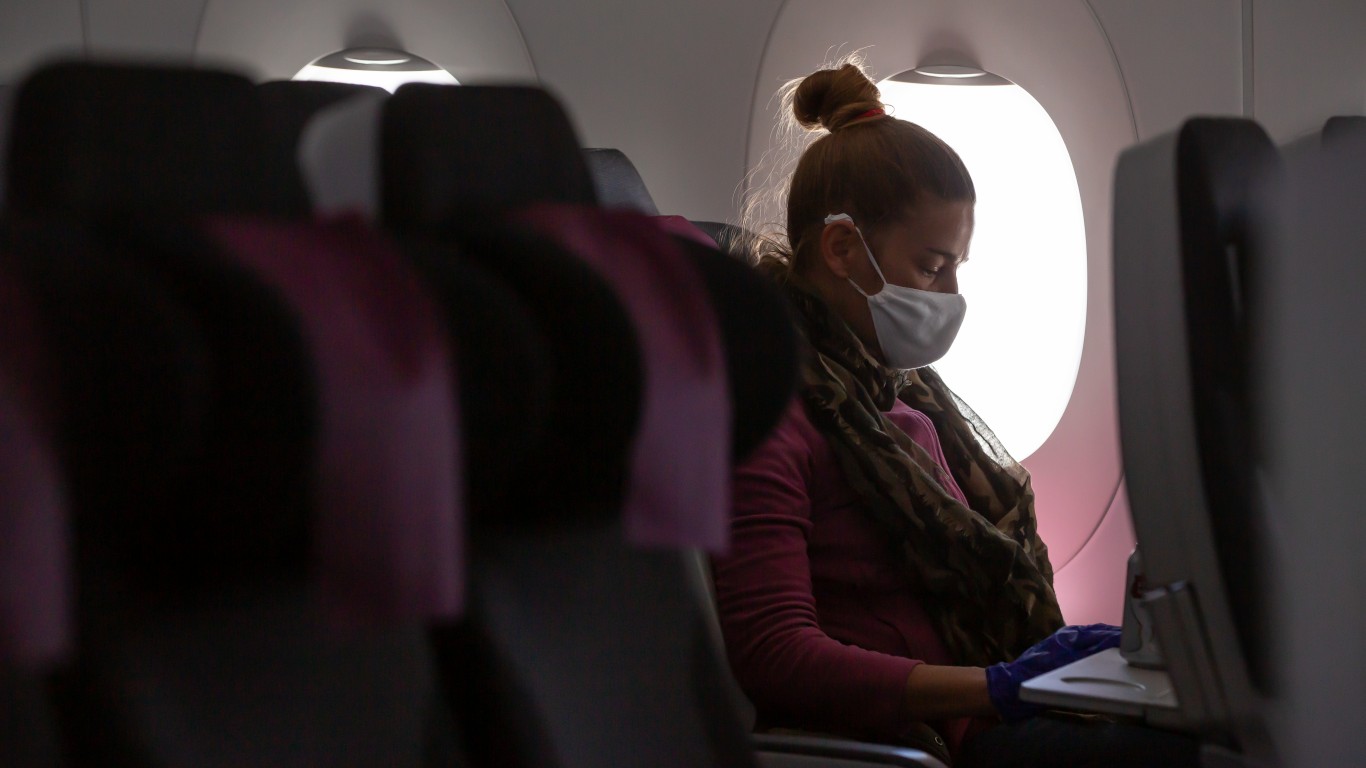
Sep 9: US to stop screening international arrivals for COVID-19
The U.S. announces it will no longer screen passengers arriving from other countries for COVID-19 and that international flights will no longer be required to fly into one of the 13 airports where enhanced coronavirus screening measures are carried out.

Oct 2: Trump and first lady test positive for the coronavirus
Trump tweets that he and first lady Melania Trump have tested positive for coronavirus and are now self-isolating. The president is 74, which puts him in a high-risk group.
[in-text-ad]
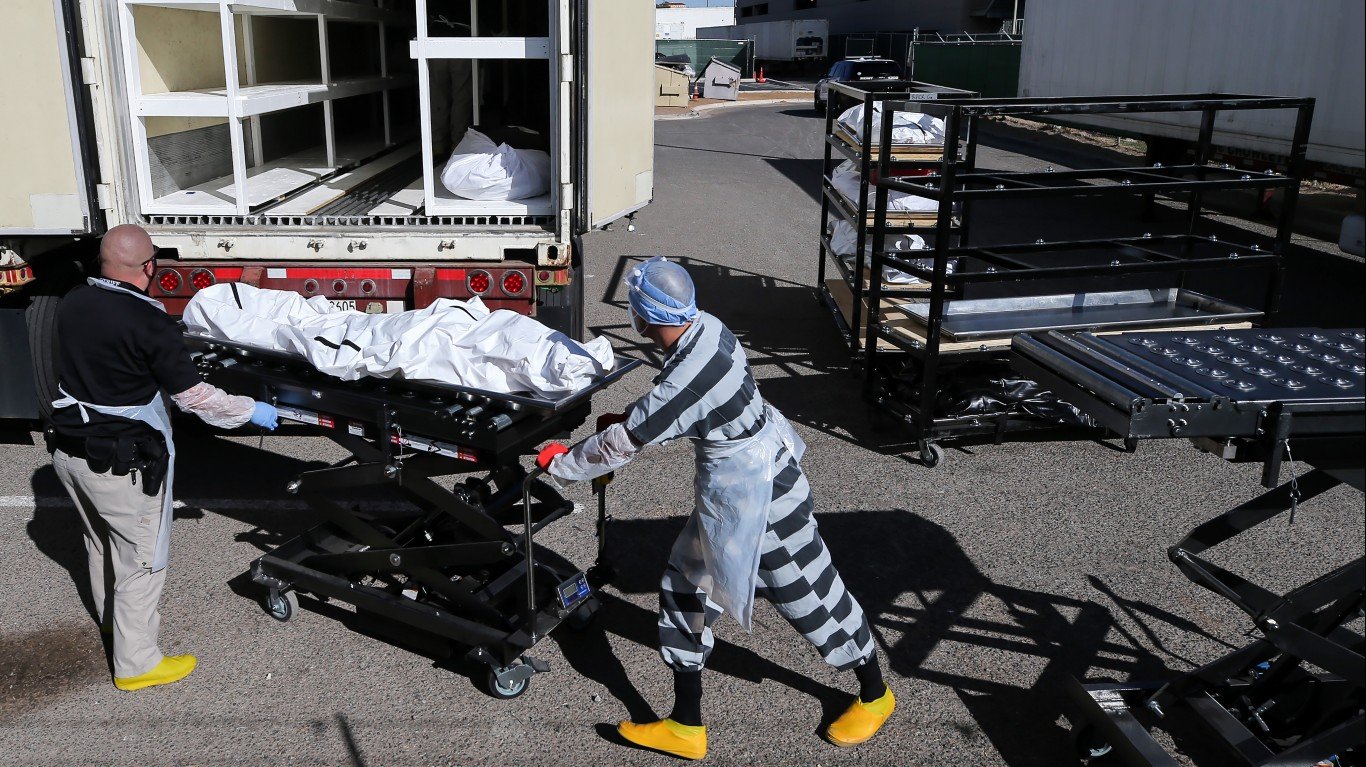
Nov 18: US death toll hits 250,000
COVID-19 has now killed more than a quarter of a million people in the U.S. That is about the entire population of Buffalo, New York.

Dec 14: US begins vaccinating population with Pfizer vaccine
The Pfizer-BioNTech vaccine against COVID-19, the first federally approved coronavirus vaccine in the U.S., is administered to health care workers and staff at nursing homes nationwide.
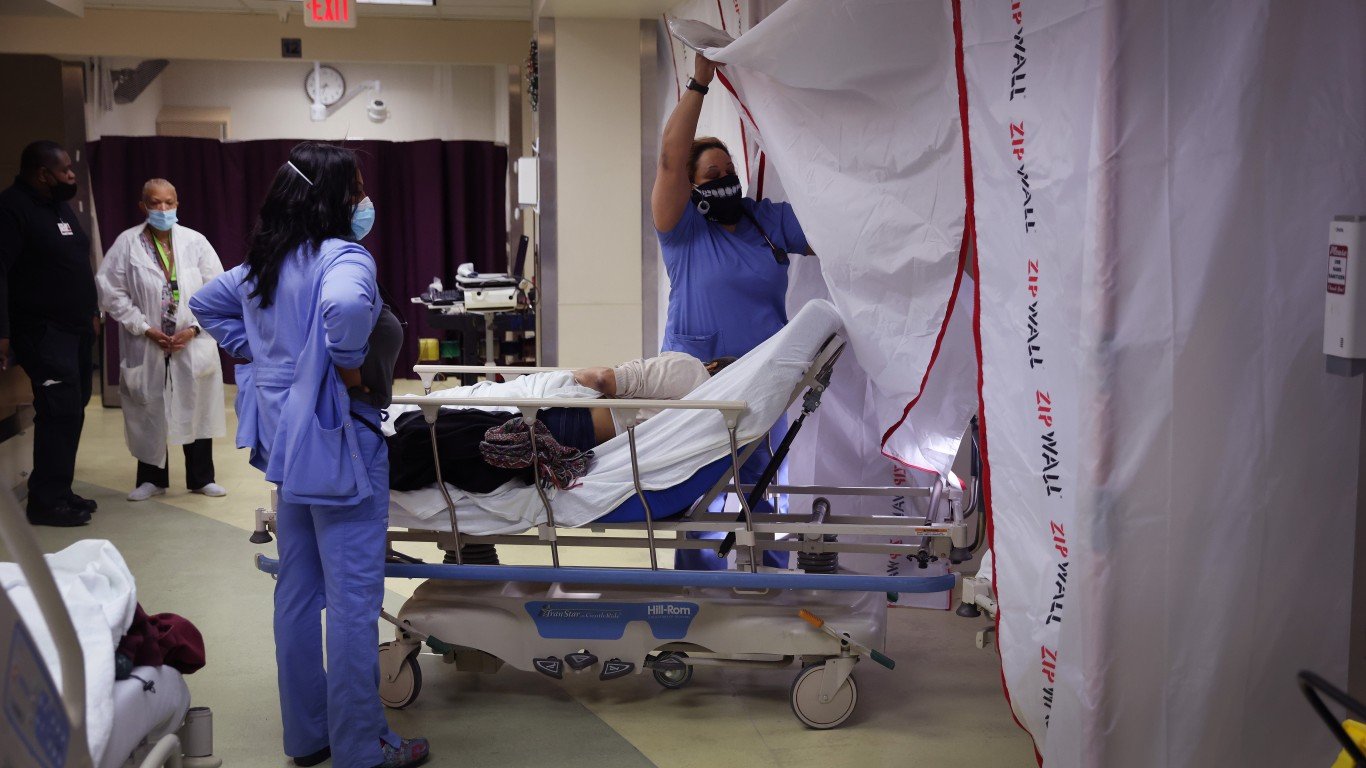
Dec 14: US death toll hits 300,000
The U.S. death toll from the coronavirus tops 300,000 — the day the country begins dispensing COVID-19 shots in a campaign to stop the pandemic.
[in-text-ad-2]

Dec 15: FDA finds Moderna vaccine safe
The U.S. Food and Drug Administration confirms the effectiveness and safety of the Moderna COVID-19 vaccine, clearing a path to authorization. The potential second COVID-19 vaccine is found to be 95% effective.
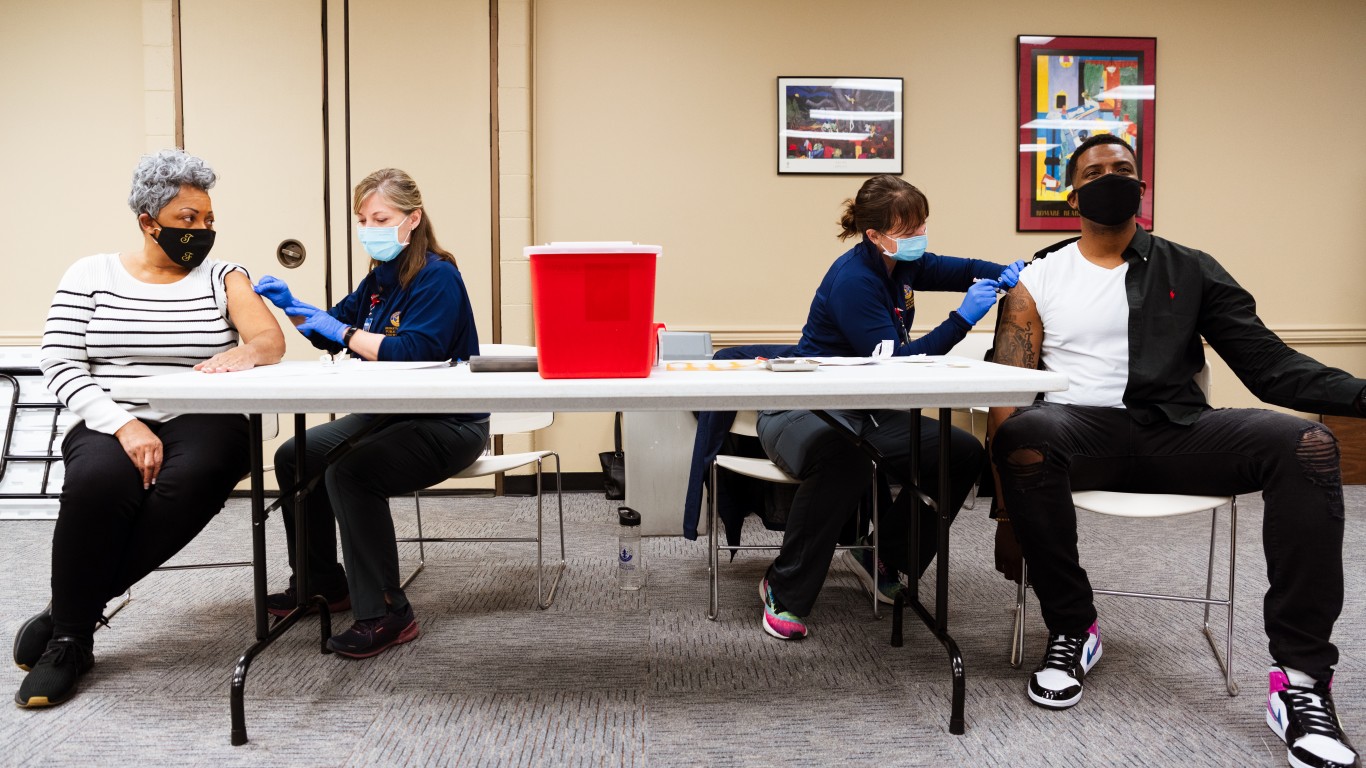
Dec 21: States receive first Moderna vaccines
A week after the first doses of the Pfizer-BioNTech coronavirus vaccine were administered in the US, a new batch of vaccines, made by Moderna, fanned out across the country. Moderna’s vaccine rollout is four times larger than Pfizer’s.
[in-text-ad]
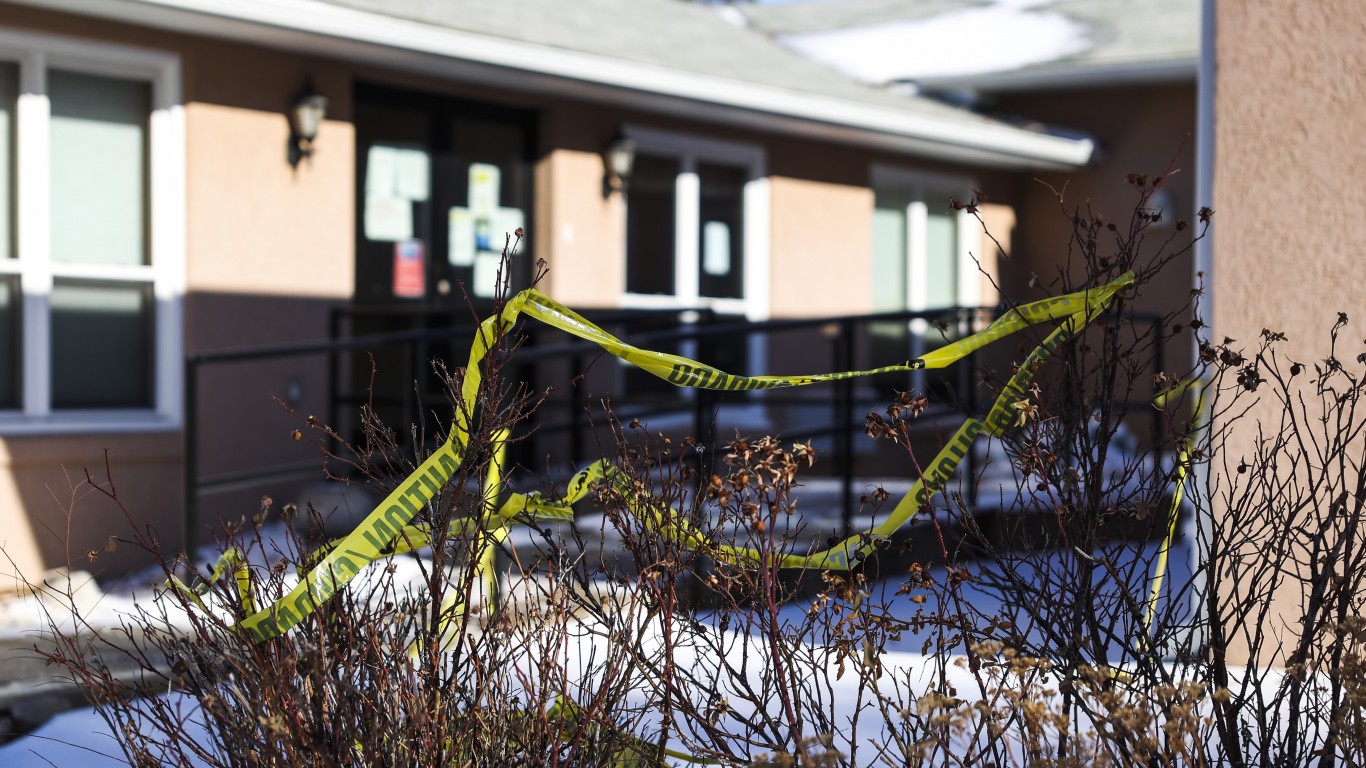
Dec 29: First US case of new COVID-19 variant found in Colorado
The first U.S. case of the more contagious COVID-19 variant first reported in the U.K. has been reported in Colorado, a week after British scientists identified the variant.
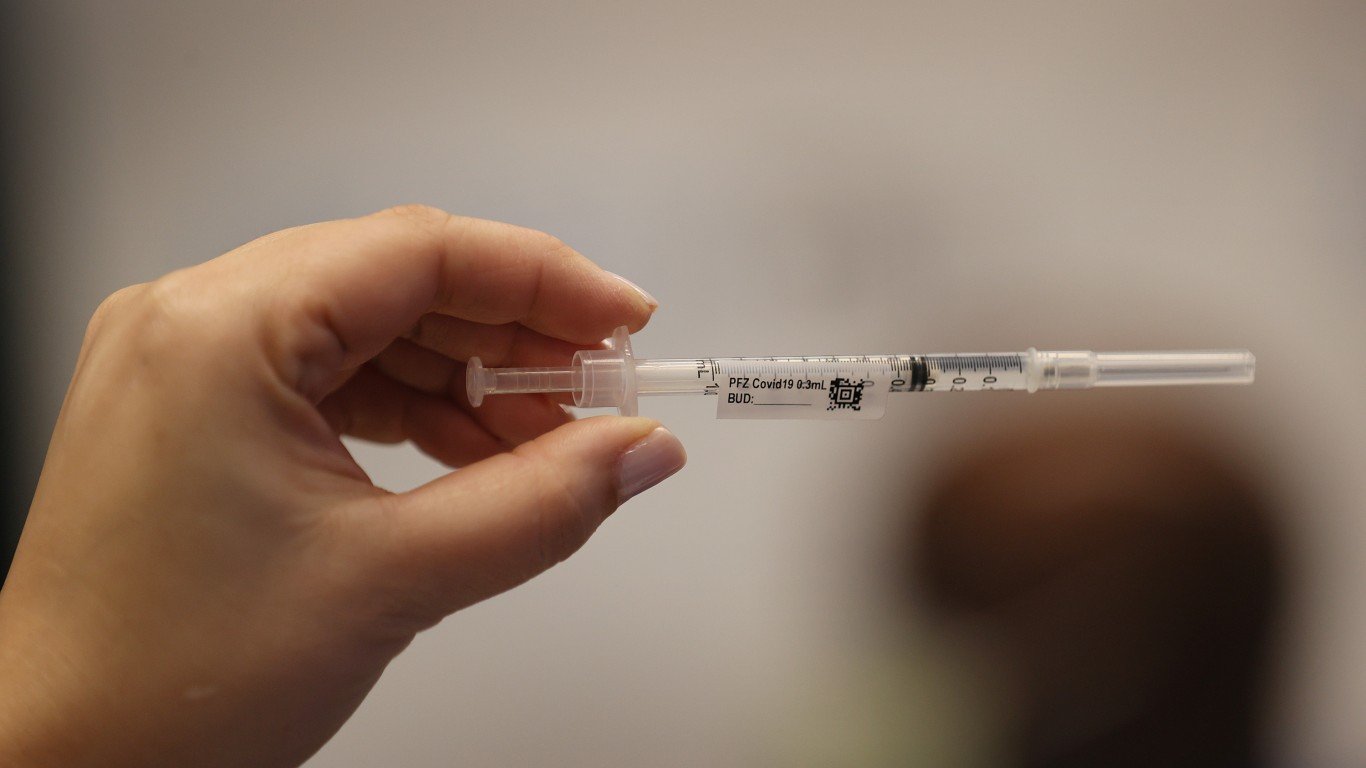
Dec 31: US falls short of goal to vaccinate 20 million Americans by end of 2020
The federal government does not meet its goal to administer 20 million coronavirus vaccines by year end due to logistical problems and underfunded health departments. By Dec. 31, 2.8 million people had received the first of two doses needed to provide immunity to the virus, according to the CDC.
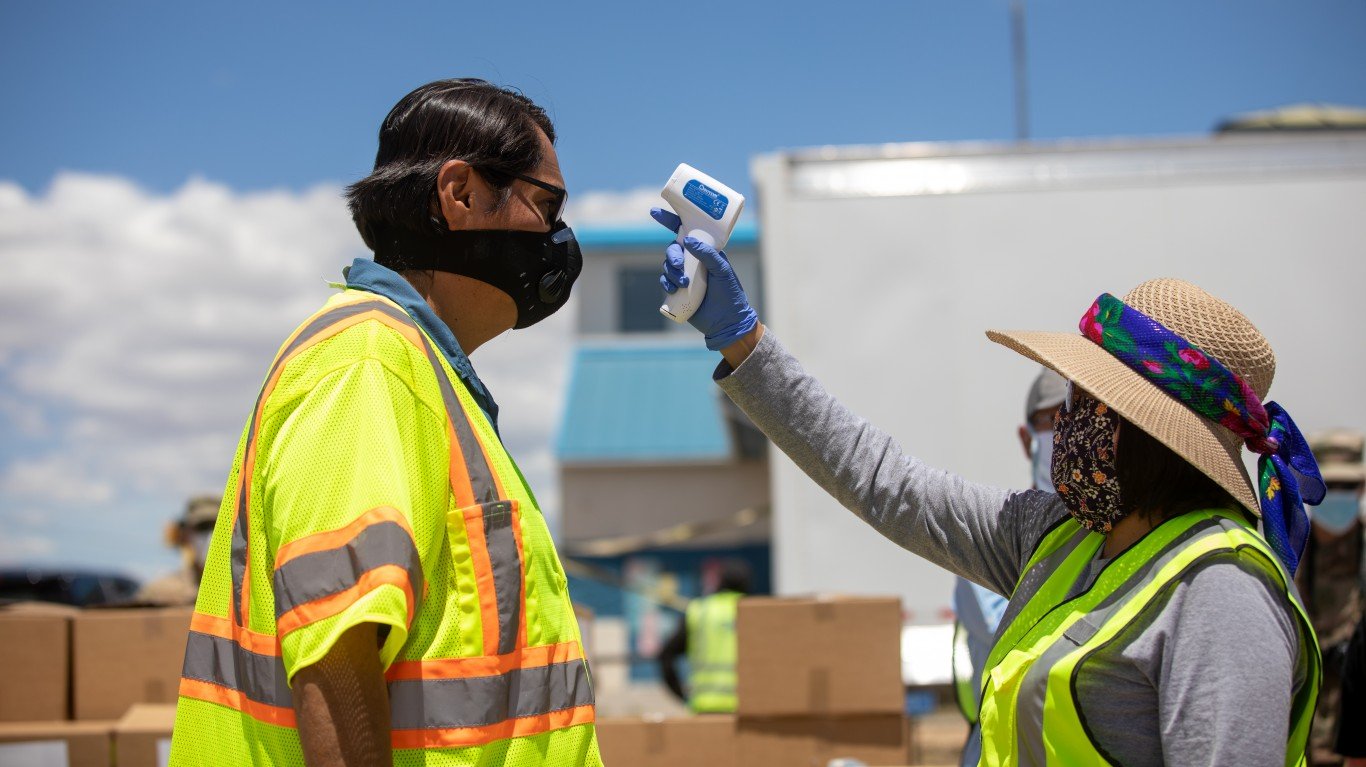
Jan 13: US passed 23 million cases
Just four days after passing 22 million cases, the U.S. tops 23 million confirmed COVID-19 cases. Almost 384,000 people in the country have died, accounting for about 19% of the nearly 2 million COVID-19 deaths reported around the world.
Sponsored: Find a Qualified Financial Advisor
Finding a qualified financial advisor doesn’t have to be hard. SmartAsset’s free tool matches you with up to 3 fiduciary financial advisors in your area in 5 minutes. Each advisor has been vetted by SmartAsset and is held to a fiduciary standard to act in your best interests. If you’re ready to be matched with local advisors that can help you achieve your financial goals, get started now.
Thank you for reading! Have some feedback for us?
Contact the 24/7 Wall St. editorial team.
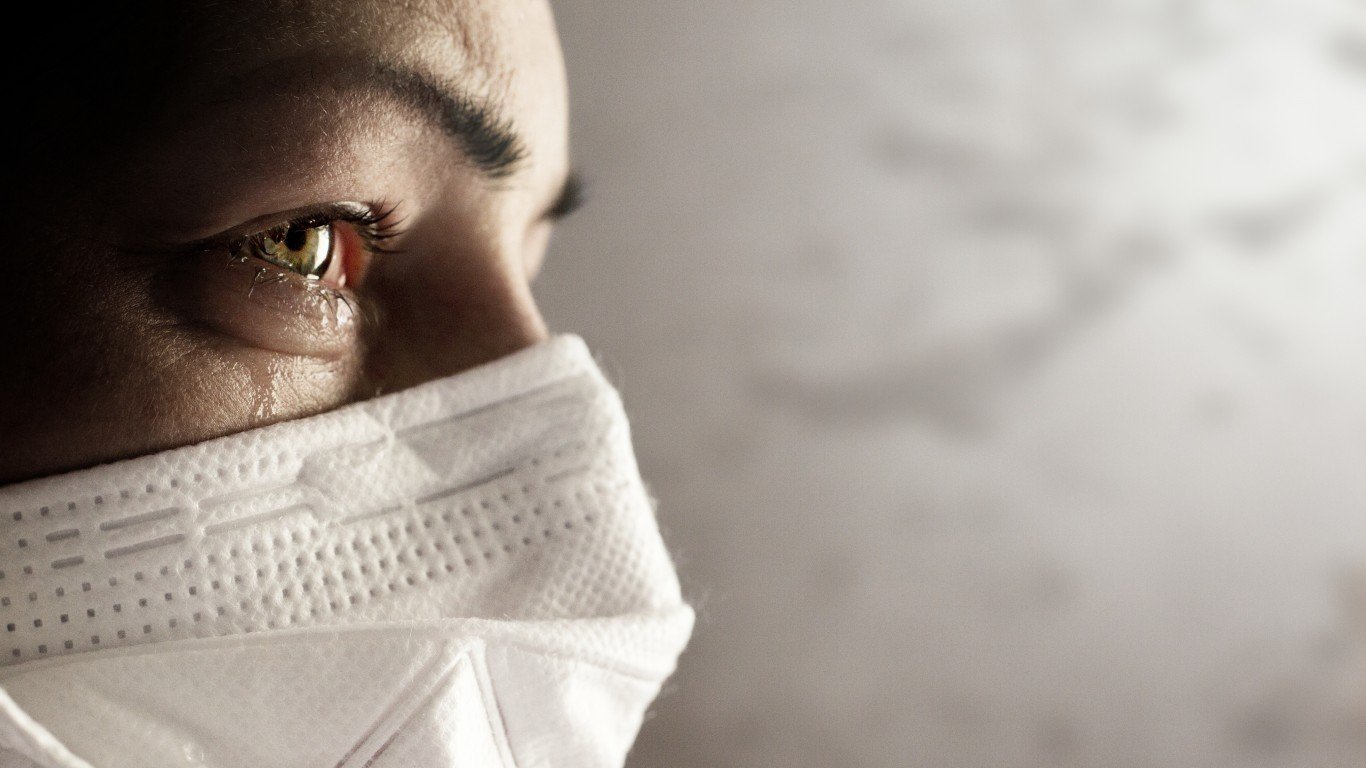 24/7 Wall St.
24/7 Wall St.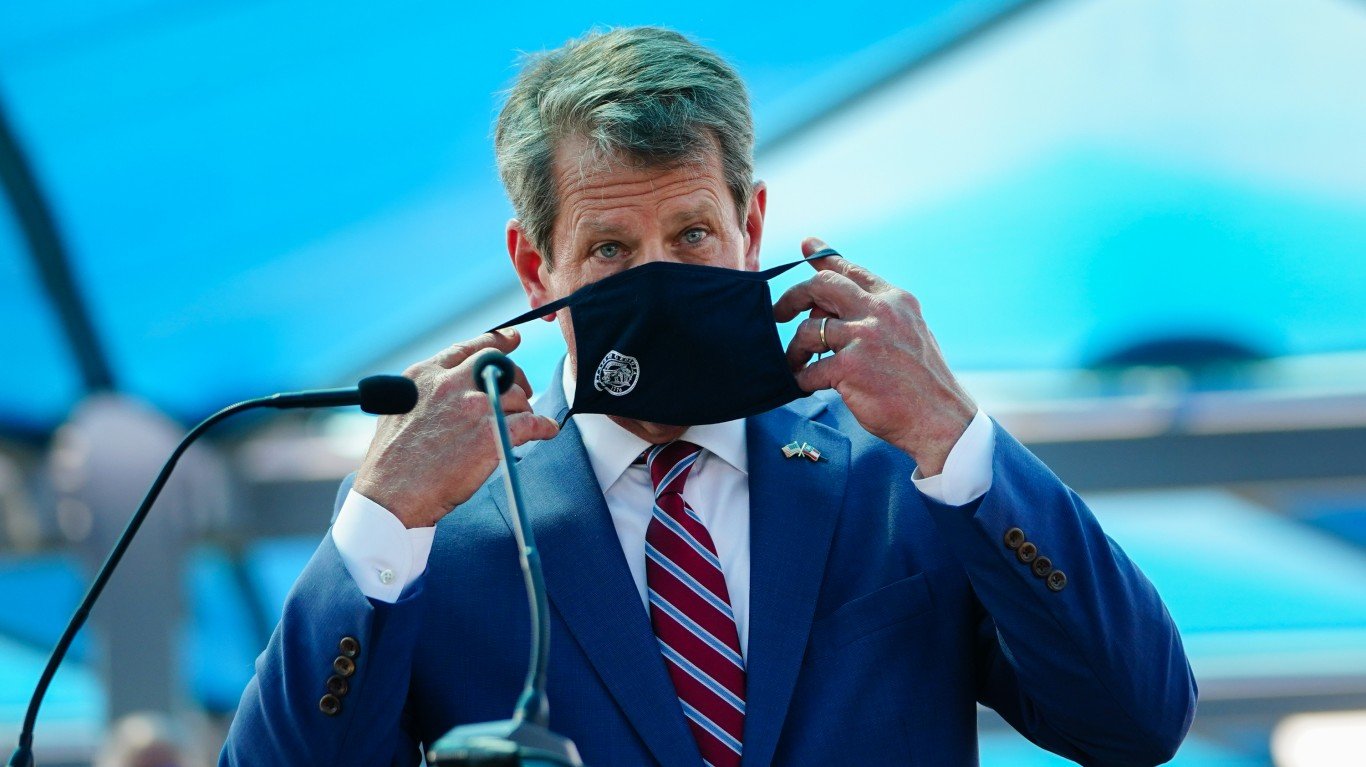 24/7 Wall St.
24/7 Wall St.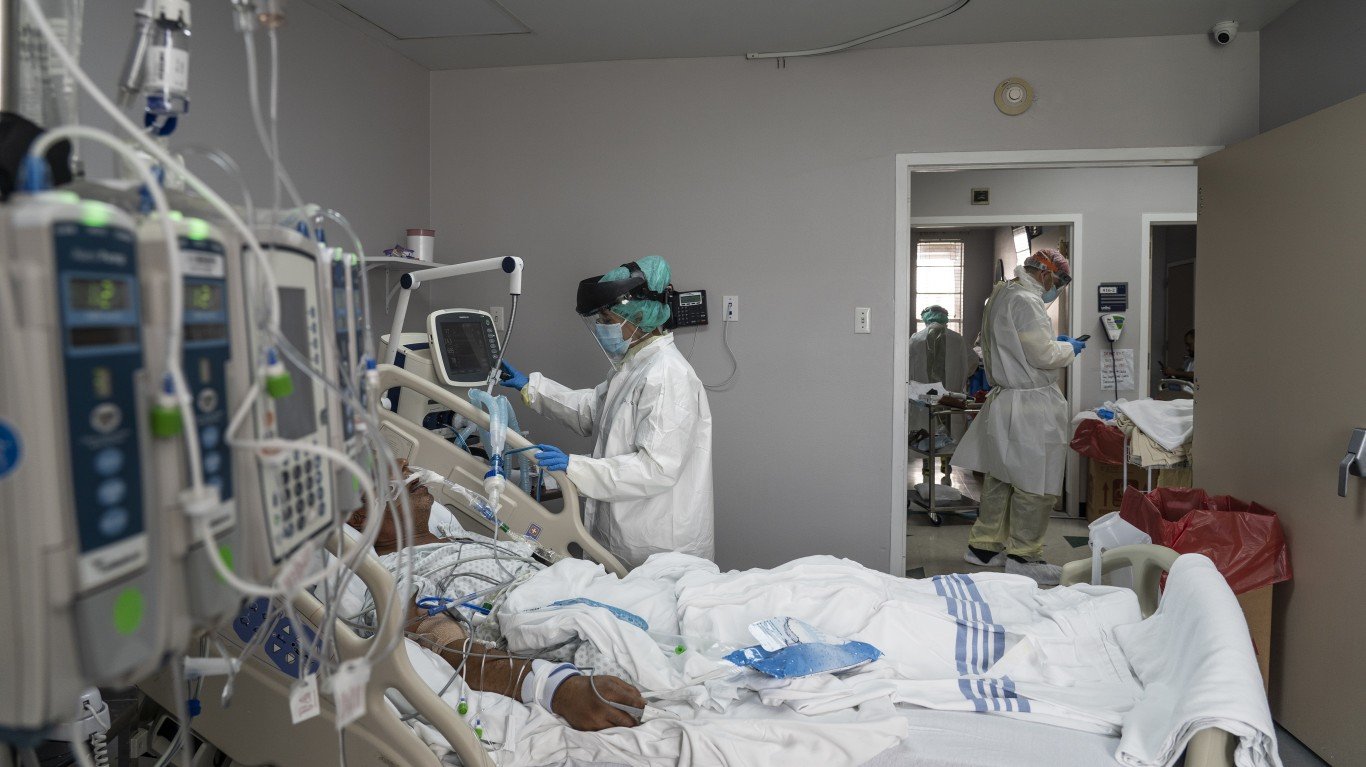 24/7 Wall St.
24/7 Wall St.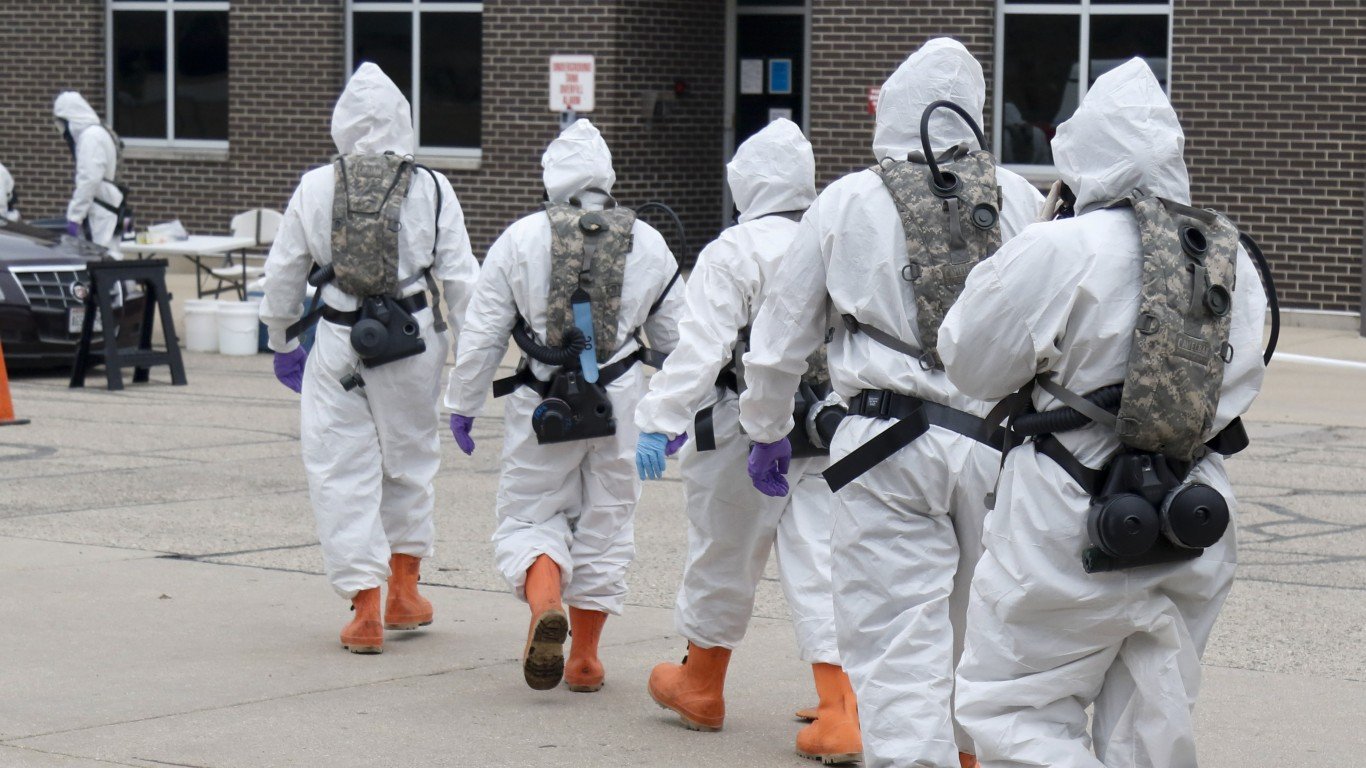 24/7 Wall St.
24/7 Wall St.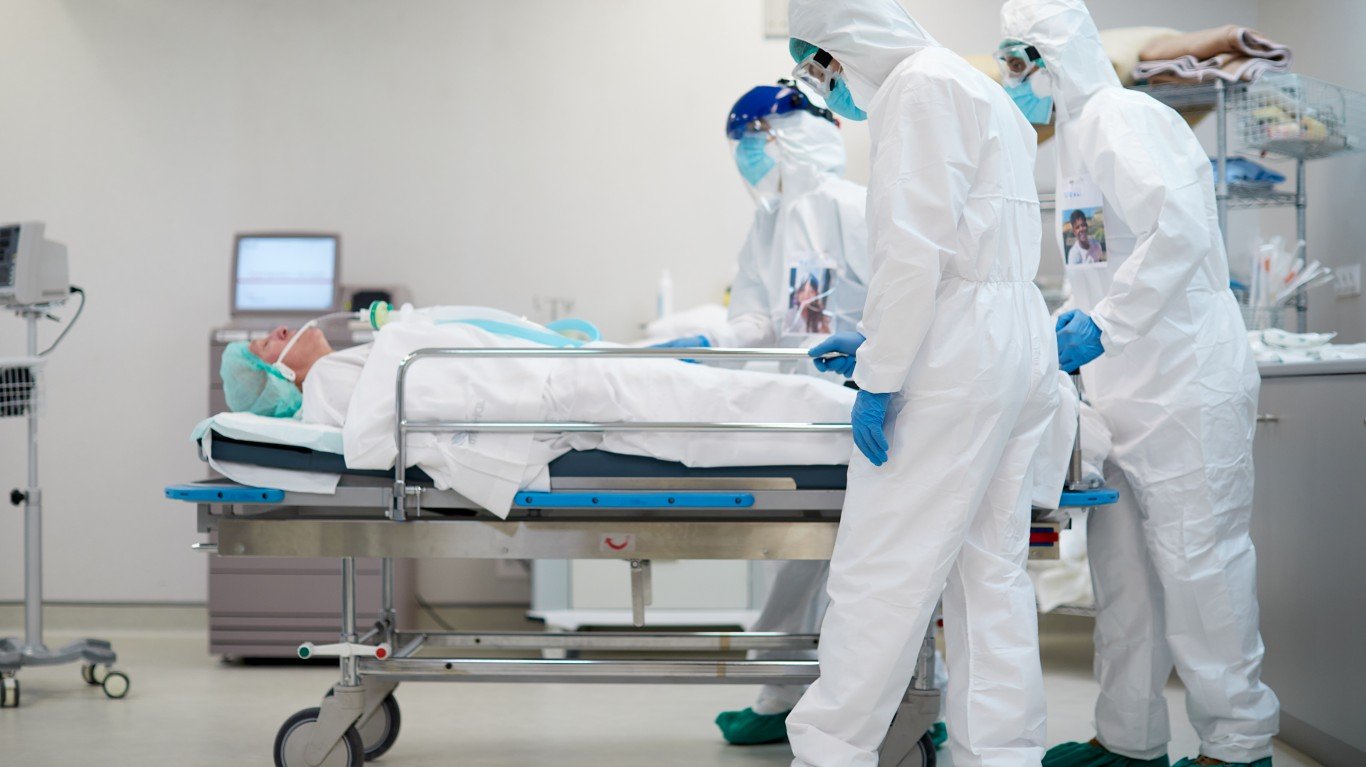 24/7 Wall St.
24/7 Wall St.


